PinotFile: 9.1 January 11, 2012
|
Maggy Hawk: Anderson Valley Pinot Noir to CovetMaggy Hawk is the name of Barbara Banke’s favorite thoroughbred horse and one of California’s newest and most exciting Pinot Noir labels. Banke was a former lawyer and wine connoisseur who married Jess Jackson and played a major role in the growth of Jackson Family Wines, the owner of many well-known wineries including Arrowood, Matanzas Creek, Hartford Court, La Crema, Freemark Abbey, La Jota and Carmel Road. Banke is quite an entrepreneur and has recently founded SonomaCeuticals with friend and Peggy Furth, the former co-proprietor of Chalk Hill Estates & Vineyards. The new company plans to produce culinary oils, flours and artisan cookies from the byproducts of grapes vinified at Kendall-Jackson vineyards (see www.pressdemocrat.com/article/20111110/BUSINESS/111119912?p=2&tc=pg). Moreover, in 2006 Banke and Furth launched the Wind Racer brand of Anderson Valley and Russian River Valley Chardonnay and Pinot Noir (Banke loves the precision and focus of Anderson Valley Pinot Noir and Chardonnay and Peggy prefers the opulence and exotic aromas of their Russian River counterparts.) The wines are highly allocated. Visit www.windracerwines.com for more information. I look forward to sampling the Wind Racer wines in the future.
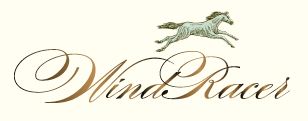 Banke established the Maggy Hawk label with an inaugural release in 2007. The new label is devoted to block-designated Pinot Noir from the Maggy Hawk Vineyard in the Anderson Valley, one of the Jackson Family Wines estate vineyards. This 58-acre vineyard was planted entirely to Pinot Noir in 2000 in the “deep end” of the Anderson Valley. Flanked by coastal redwoods, and lying in a remote far west location (west of the Rock Shop on Highway 128), Maggy Hawk is a fog-cloaked and wind-swept vineyard at 300 to 500 feet elevation consisting of a complex array of steep slopes and facings, most of which are oriented south. The soil is well-drained decomposed sandstone. Pinot Noir clones planted here are Pommard, Wädenswil, and Dijon 115, 667 and 777 with 7’ x 5’ spacing. The site holds special reverence for Maggy Hawk winemaker Elizabeth Grant-Douglas who is also the winemaker for La Crema Winery. She calls it her “favorite place on earth,” and simply “heavenly.” Because of its remoteness, the vineyard has no neighbor issues to impact the farming of the vineyard. Elizabeth raves about the beautiful fruit that develops naturally in this vineyard from highly self-controlled small vines (“like Bonsai,” she says). No intensive viticultural techniques are required as the vines are largely self-regulating and typically produce yields of less than two tons per acre. Yields can be heavily influenced by early rains and frosts, since ripening at this site is typically very late in the growing season. The vineyard manager, Dennis Winchester, lives on the property. The Maggie Hawk Vineyard became an important component of the La Crema Anderson Valley Pinot Noir bottling beginning in 2003. In 2006 there was a bumper crop of more than three tons per acre from the vineyard and two La Crema Maggy Hawk Pinot Noirs were vinified (No. 5 Block and Blend) by the La Crema winemaker at the time, Melissa Stackhouse. The following year, Banke launched the Maggy Hawk label and three wines were produced each named after horses born to the mare Maggy Hawk: Jolie, Afleet, and Stormin’. Afleet, the Preakness and Belmont Stakes winner, is pictured below.
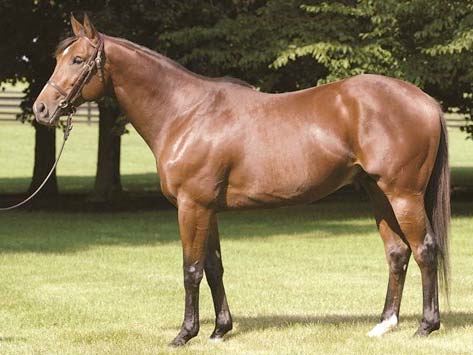 The 2007 “Afleet” bottling is based entirely on the Pommard clone from a 1.23-acre block, the “Jolie” Pinot Noir is sourced from a 10.03-acre block planted to Dijon 115 clone, and the Stormin’ Pinot Noir is from a 3.47-acre block of 667 clone. Yields were quite low in 2007: 1.58 tons per acre for Afleet, 1.38 tons per acre for Jolie, and 1.24 tons per acre for Stormin’. Each of the three wines were vinified in the same manner to bring out the distinct identity of the different blocks in the Maggy Hawk Vineyard. The wines were originally to be designated Block 7 (Jolie), Block 4 (Afleet), and Block 6 (Stormin’), and you may find images of labels on the internet showing block designations rather than the names of horses. Winemaking was as follows. After a 5 day cold soak, fermentations were carried out with natural and inoculate (Assmanhausen) yeasts. Punch downs were carried out up to three times a day. The wines were aged in 50% new French oak barrels for 14-15 months. The trio of 2007 Maggy Hawk Pinot Noirs are vinous treasures of uncommon pedigree much like their namesakes. They are truly special connoisseur’s wines that defy appropriate description. I could suggest terms like sensual, distinctive, complex, and nuanced but superlatives don’t do the wines justice. Clearly, Maggy Hawk is an extraordinary site possessing an unidentifiable somethingness that sets it apart. Maggy Hawk currently has no website (one is planned for the near future) and no tasting facility. The wines are in limited distribution, available from Sherry-Lehmann in New York City (www.sherry-lehmann.com). There were no wines released from the 2008 vintage due to the smoke taint from the extensive forest fires in the region. The 2009 vintage Pinot Noirs will be release in the spring of 2012.
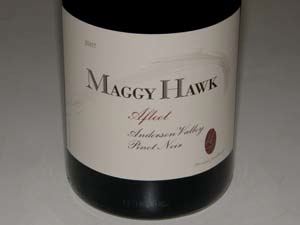 2007 Maggy Hawk Afleet Anderson Valley Pinot Noir 14.8% alc., pH 3.72, TA 0.56, 91 cases, $70. · Moderate reddish-purple color in the glass. Beguiling aromas of brandied cherries, rose hips tea, violets and seasoned oak. Delicious black raspberry and cherry sappy flavors on a medium weight frame complimented by hints of exotic spice and fruit leather. The most intense, deeply fruited and structured wine of the three, more opaque than see-through lingerie. The aromatic peacock tail on the finish is notable for its length. Even better the following day from a previously opened and re-corked bottle. A very special wine.
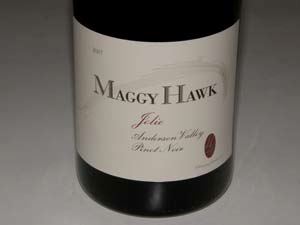 2007 Maggy Hawk Jolie Anderson Valley Pinot Noir 14.4% alc., pH 3.66, TA 0.53, 89 cases, $70. · Moderate reddish-purple hue in the glass. Exotic and intriguing nose featuring aromas of black cherries, dark berries, Moroccan spices and a hint of coffee broadening over time to even deeper autumnal notes. Beautifully complex array of dark red Pinot fruits robed in mild dusty tannins, ever-expanding in the mouth, and finishing with amazing persistence and length. The fruit really sings in this seamless and classy wine. Still great the next day from a previously opened and re-corked bottle.
2007 Maggy Hawk Stormin’ Anderson Valley Pinot Noir 14.3% alc., pH 3.69, TA 0.54, 77 cases, $70. · Moderate reddish-purple color in the glass. Shy aromas of black raspberry, dried cherries, and brioche. Discreetly concentrated flavors of black cherries, blueberries and bramble caressed by ripe, fine-grain tannins, persisting on the slightly tart cherry pie finish. Sleek, elegant and refined, weaving a stylish dance ever so lightly on the palate. Very good (+).
DuMOL: Sublime in ’09DuMOL has an established list of estate and other premium vineyard sources, a talented winemaker and viticulturist in Andy Smith at the helm since 2000, and a modern winery in Windsor, California. The winery, which is named after the first winemaker’s children, Duncan and Molly, has developed a dedicated cadre of followers who relish the consistently superb Pinot Noirs and Chardonnays. Partners Michael Verlander, Kerry Murphy and Andy Smith lead a low profile with discrete participation in public tastings and minimal emphasis on wine critics’ scores which they do not heavily tout. This attitude does not reflect any smugness from the proprietors, but rather an emphasis on investment in the quality of wines and a preference for letting the wines speak for themselves. As you can see from the reviews below, the wines speak loud and clear of their California pedigree. That said, these are not California fruit bomb styled Pinot Noirs. DuMOL acquired somewhat of an undeserved reputation for making “over sized” wines because of the 2003 and 2004 vintages that were very hot years. Smith notes, “I don’t know anyone in the Russian River Valley that picks earlier than us, except Kistler, since 2009. It’s just that we do much more vineyard work so the grapes are naturally more concentrated, something for which I will not apologize for!” Smith (pictured below at the winery) considers the 2009 DuMOL Pinot Noirs to be the finest set of red wines to date (the winery was started in 1996), although he thinks that 2010 will be at least as good (a bit leaner, but with great purity), and 2011 will also be very, very good as all vineyards were picked except one before the rains came. “2009 was as near a perfect growing season as one could script with plenty of sunshine without excessive heat, culminating in a moderately paced harvest. Across the board the wines strike an effortless balance between coastal fruit purity and lingering vineyard-derived complexity. They are absolutely our most naturally grown and vinified group of wines yet. As with all our wines, you can enjoy their freshness and zesty fruit on release, but far greater rewards await with 3 to 6+ years of patience.”
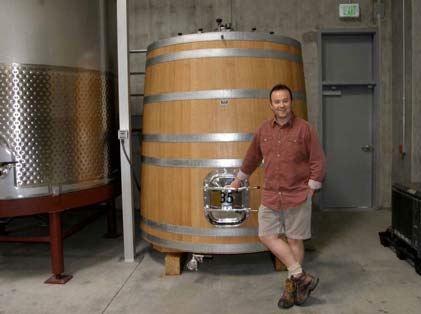 DuMOL features both Russian River Valley appellation and vineyard-specific or limited production (two to three vineyards in combination) Pinot Noirs. Most of the vineyard sources are in the cooler reaches of the Russian River Valley, and the Green Valley and Sonoma Coast appellations. The Russian River Valley appellation Pinot Noir is made in the largest quantity, offered first to those jumping from the wait list to the Pre-Release Member list, and is the only Pinot Noir in significant retail and restaurant distribution. The appellation blend is crafted with care and should not be taken as an inferior wine. The 2009 DuMOL Russian River Valley Pinot Noir made my 2011 Second Team North American All-American list. Smith described his winemaking regimen for this wine (much of which carries over to the more limited Pinot Noir bottlings) to me recently. “This 3,900 case appellation blend is composed of seven vineyards (30% is DuMOL Estate) and 21 separate fermentation lots, and contains free run wine only. Clones are Old Beringer, Dijon 114, 115, 667, 777, Calera, Swan and Pommard. Average yield is 2.75 tons per acre. Vine age varies from 5 to 24 years. All lots are harvested, fermented and barreled individually. A selection is made in July, and racked from barrel immediately pre-harvest in early September to holding tanks. The final blend settles naturally in these tanks for 3 months before bottling in December. It is during these 3 months that the wine really harmonizes and achieves microbial stability. The wine contains our more fruit-driven and concentrated lots while the more backward and structured lots go to our vineyard-designate wines. The wine spends 11 months in barrel (40% new French oak), 34 months in tank, and 6 months in bottle before release in June.” Fermentations are native and the wines are bottled unfined and unfiltered. I found all the wines to be bold and richly flavored, yet offering easy drink ability by virtue of their caressing textures and crispness. Oak is nicely supportive and well-integrated, tannins are tame, the finishing acidities are refreshing, and the wines offer early approachability, yet display the type of impeccable balance that predicts age ability. DuMOL wines are highly flavorful and seductive when young, but benefit from at least a few years of aging and have the potential for successful midterm aging of 7 to 15 years. I found it very difficult to choose favorites among this superb lineup of wines. The vineyard-specific or small-production (two or three vineyards) Pinot Noirs are not named after the vineyard source(s) but with Gaelic names including “eoin,” “aiden,” “ryan” and ”finn.” The DuMOL Chardonnays should not be missed for they are among my favorites crafted in California today. The 2009 DuMOL isobel Russian River Valley Chardonnay sourced from old vines in the Heintz Vineyard is stunning. The Syrahs have many fans as well. The winery sells most of its production through a Pre-Release Member list which currently has a wait list at www.dumol.com. There is limited retail and restaurant distribution. The winery is not open to the public.
2009 DuMOL Estate Russian River Valley Pinot Noir 14.3% alc., 649 cases, $80. The estate vineyard is located in the Green Valley of Russian River Valley. Close planted Calera and Swan selections. Third vintage from this vineyard. · Moderately dark reddish-purple color in the glass. Very aromatic initially, offering scents of ripe cherries, strawberries, rose petals, spice and the slightest oak. Richly flavored but possessing a charming, ephemeral quality. Tasty core of dark red berries, black cherries, baking spice and a hint of white chocolate robed in mild-mannered tannins. Cranberry and pomegranate show up on the finish that offers bright acidity. Still solid the next day from a previously opened and re-corked bottle. Will benefit from a few years in the cellar for full expression. Impressive.
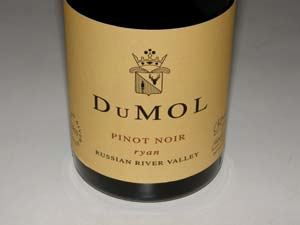 2009 DuMOL ryan Russian River Valley Pinot Noir 14.2% alc., 776 cases, $80. Sourced from the Dutton-Widdoes and Abbott vineyards located on the western edge of the Russian River Valley. · Moderate reddish-purple hue in the glass. Very ripe fruit profile emerges over time in the glass featuring dark red berries and cherries along with a forest floor tone. A fat, silken, sweet core of vivid dark red fruit makes an impression on the mid palate and persists on the fresh, crisp finish that displays a cut of citrus. Beautifully balanced with soft, sleek tannins. The wine pushes the ripeness envelope but never crosses over. Fabulous the next day with remarkable intensity of flavor from a previously opened and re-corked bottle.
2009 DuMOL aiden Russian River Valley Pinot Noir 14.2% alc., 448 cases, $76. Sourced from the 3-acre Wildrose Vineyard in Green Valley. Dijon clones 115 and 777. · Medium reddish-purple color in the glass. A chameleon of a nose offering glimpses of black cherries, biscuit, and savory oak that come and go. Full-flavored and complex offering notes of blackberries, black raspberries, black tea, leaf, and oak vanillin. The tannins are supple and the wine finishes with bright acidity. A solid, even special wine. Very good.
2009 DuMOL eoin Sonoma Coast Pinot Noir 14.1% alc., 400 cases, $76. Sourced from the Hyde family’s Sonoma Stage Vineyard located at the southern edge of the Sonoma Coast. · Darkly colored in the glass. Remarkably beguiling nose offering aromas of fresh-picked darker berries with just the right accent of toasty and spicy oak. Full-bodied and bold with an array of perfectly ripened dark berries with a subtle underpinning of earthiness, showing good persistence on the finish. Firm, but well-tamed chalky tannins add texture. The flavors don’t yet match the irresistible nose, but give this wine a little time in the bottle. Very good (+).
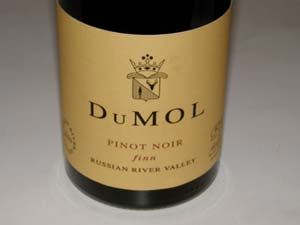 2009 DuMOL finn Russian River Valley Pinot Noir 14.3% alc., 392 cases, $80. A multi-clonal blend from three vineyards at the western edge of the Russian River Valley. · Dark reddish-purple color in the glass. Patience is required with this wine which slowly evolves in the glass over time, ultimately yielding frambiose aroma and flavor with discreet intensity, wrapped in a complimentary supporting tannic structure. The mouth feel is strikingly smooth and comforting and the overall impression is one of style and finesse. Decant if you pop a cork now.
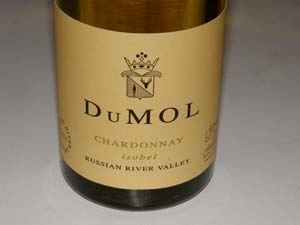 2009 DuMOL isobel Russian River Valley Chardonnay 14.3% alc., 1,174 cases, $60. Sourced from old-vine Charles Heintz Vineyard in the Green Valley. Aged 18 months sur lie. · Light golden straw color in the glass. Aromas of quince, lychee, baked apple, flint, and subtle oak-driven scents of buttered popcorn and toffee. Delicious flavors of apple pan dowdy, honey, citrus and toffee with a slight tropical fruit riff offered in a discreet and charming style. Impressive finishing show for a Chardonnay. Still great two days later from a previously opened and re-corked bottle. I had a second bottle at a restaurant a week later with lunch and it was even better accompanied by a persimmon-studied very lightly dressed salad. I have had more great Chardonnay drinking experiences from Charles Heintz Vineyard than any other vineyard in California.
Embarrassment of Riches: CaliforniaAs I look back on 2011, I have to shake my head in amazement at how far both California and Oregon have come with Pinot Noir. It wasn’t that long ago (2001) that I launched The PinotFile, but in those ten years there has been remarkable progress in taming the finicky Pinot Noir grape, and its moniker, ‘the heartbreak grape,’ is now a shallow reference to the challenges of the past. The days of lifeless, weedy, vegetal, stinky and thin New World Pinot Noir are a distant memory. Finding great Pinot Noir used to be a job, but today it is more an adventure. Here is what I wrote July 29, 2001, in The PinotFile. “Why does one keep buying disappointing wine in the search for wine’s Shangri-La one more time? Because once in a long, long while, after spending hundreds and hundreds of dollars on case after case of mediocre North American Pinot Noir, you discover something so sublime that words such as mind-blowing, sensational, sexy and orgasmic come to mind (see “New Year Winegasm” on the last page of this issue). I confess that I long for my perfect Pinot Noir experience as much as anyone, and more than common sense dictates. I will keep ceding the money and hope for the best. Whip me one more time Mistress Pinot.” Today, Pinot Noir lovers are experiencing an embarrassment of riches. It took thousands of years for Pinot Noir to emerge as the primary red grape of Burgundy, and many more centuries for Burgundy’s complex wine culture and accomplishments to develop. In California and Oregon, the process has been mirrored in barely half a century, spurred by a dedicated group of winegrowers and vintners who took their cues from the Burgundians, but put their own stamp on Pinot Noir. The featured wineries and wines reviewed here were sampled as 2011 was coming to a close and 2012 began. Except for three wineries (Joseph Jewell, St. Rose and La Follette), all are established labels that I have touted in past issues. With few exceptions, the wines are from California’s superb 2009 vintage.
In 2006, noted veteran winemaker George Bursick left Ferrari-Carano after twenty-two years and joined new-hire viticulturist John Erbe in transforming J Vineyards & Winery from primarily a sparkling wine house to a winery focused on site-specific Pinot Noir and estate grown Chardonnay and Pinot Gris from the Russian River Valley and Sonoma Coast. By the 2008 vintage, Bursick’s stamp on the J Pinot Noir lineup was evident and the wines were on a parr quality wise with other established Russian River Valley Pinot Noir specialists. Bursick emphasized the removal of seeds early in the winemaking process with the aim of reducing tannins, capturing silky textures, and eliminating the green flavors that immature seeds can impart to the wine. He implemented the use of Burgundian yeasts and malolactic strains, specific lot fermenter punch down regimes, the use of Italian “Prospero” stainless steel tanks for fermentation, extended fermentations, gravity flow processing, aging in unique French Burgundian barrels, and thoughtful batonage during aging. In 2011, as J celebrated its 25th year, Bursick left to develop Bursick Wine Consulting and was replaced by Melissa Stackhouse, the esteemed winemaker at La Crema from 2003 to 2010, and most recently, the Pinot Noir Winemaster for all Jackson Family Wines. 2011 will be her first vintage for J and her stylistic imprint remains to be seen but I don’t expect the wines to miss a beat. Stackhouse is a graduate of University of California Davis with a degree in viticulture and enology and has years of experience with Pinot Noir. All ten of the J estate vineyards (254 acres) are located in the Russian River Valley appellation. The signature Pinot Noir vineyards are Nicole’s and Robert Thomas. A map of the vineyards is pictured below. In November 2011, J Vineyards achieved “certified sustainable” status through the California Sustainable Winegrowers Alliance (CSWA) covering all vineyard and winery operations. All wines have been produced at a modern winery facility on Old Redwood Highway since 1997. Incorporated in the same building is the contemporary J Visitor Center where a number of tasting options are available. Tours are offered daily at 11:00 AM and 2:30 PM. The winery’s single-vineyard Pinot Noirs are sold primarily through the tasting room. Visit www.jwine.com for further information. The reviewed wines below are from the 2009 vintage and were vinified under the direction of George Bursick. All wines are night harvested and gently de-stemmed, fermented after inoculation in open-top fermenters, and aged 12 months in Burgundian oak barrels. The wines really exhibit the smooth, creamy textures that Bursick is known for as well as very soft tannins. The 2009 J California Pinot Gris and J Cooper Vineyard Pinot Gris have been previously reviewed and are among the best examples of this varietal currently produced in California. And don’t forget the excellent sparklers from J, as they continue to be in the upper echelon of California production.
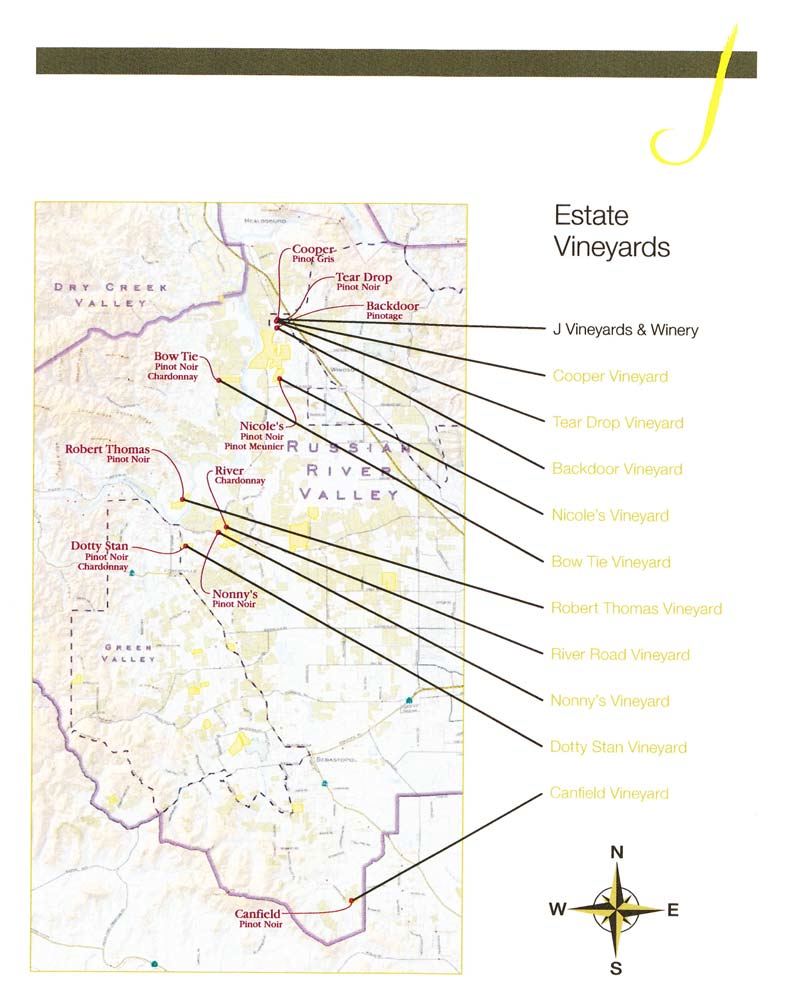
2009 J Vineyards Robert Thomas Vineyard Estate Grown Russian River Valley Pinot Noir 14.3% alc., pH 3.65, TA 0.57, 425 cases, $50. From a 47-acre Estate vineyard adjacent Westside Road at the elbow of the Russian River as it rounds a sharp corner and heads west to the Pacific Ocean. Clones are primarily Rochioli, 2A and Dijon 115. · Moderate reddish-purple color in the glass. Ripe aromatics featuring dark red fruits, black grapes, black plum and brier. Earthy, slightly rugged and masculine with medium-weighted flavors of dark cherries and berries, plum and anise persisting on the elegantly creamy finish. Very Good.
2009 J Vineyards Freestone Hill Vineyard Russian River Valley Pinot Noir 14.3% alc., pH 3.70, TA 0.57, 100 cases, $60. This vineyard is farmed by the Dutton family and overlooks the community of Freestone. The clones are 113, 115 and 667. · Moderate reddish-purple hue in the glass. Reserved aromas of plum pudding, sage, spice and rose petals. Soft, creamy and delicate on the palate with shy flavors of purple berries and black cherries, slightly oaked. Picks up intensity and interest over time in the glass. Give this wine a few years in the bottle for maximum enjoyment. Good (+).
 2009 J Vineyards Nicole’s Vineyard Estate Grown Russian River Valley Pinot Noir 14.3% alc., pH 3.72, TA 0.54, 550 cases, $50. A 45.8-acre Estate vineyard located off Eastside Road just south of the winery. Clones include 2A and Dijon 113 and 115. Aged for 12 months in 40% new Burgundian oak barrels, with an additional three months in barrel for select barrels. · Moderate reddish-purple color in the glass. Nicely perfumed with aromas of Bing cherries, baking spices and a hint of toasty oak. Very soft and creamy on the mid palate with gossamer tannins. The theme is cherries with an added cola accent. A feminine wine that is easy to cozy up to and deserving of the winery’s “flagship” designation.
I am surprised to find so many wine lovers who are unaware of this label and do not realize that this relatively new project is headed by iconic winemaker Gary Farrell in partnership with Bill Hambrecht. Farrell launched his eponymous label in 1982, and until 2006, when he sold Gary Farrell Winery, offered elegantly styled Pinot Noirs with nuanced flavors, relative low alcohol levels and bright acidity which brought notoriety to the Russian River Valley. His new winery, Alysian (ah-liss-ee-uhn), is focused on small lots of hand crafted Pinot Noir and Chardonnay from the Russian River Valley. I have tasted Alysian wines from the first two vintages and can highly recommend them. The full story on Alysian wines by Gary Farrell is described in depth in a recent issue of The PinotFile (www.princeofpinot.com/article/1104/). Alysian wines are sold exclusively by mailing list and through the winery’s online store at www.alysianwines.com. The following two 2008 Pinot Noirs were recently released. If you prefer a more elegant and acid-driven take on Russian River Valley Pinot Noir, wines that are flavorful without weight and ripeness, Alysian wines are for you. The winemaking process includes de-stemming, fermentation in small open tops after a 4 day cold soak using wild and cultured yeast with manual punch downs. The wines are aged in 50% new Francois Frères and Rousseau French oak barrels. Both 2008 wines will benefit from cellaring but the Floodgate is the most approachable now.
2008 Alysian Rochioli Vineyard Allen-Rochioli Block Russian River Valley Pinot Noir 14.3% alc., pH 3.44, TA 0.665, 159 cases, $65. Dijon clones 115 and 777 and Pommard 4 from Rochioli Vineyard and Dijon clone 777 from Allen Vineyard. Aged 14 months in 40% new French oak barrels. · Moderately light reddish-purple color in the glass. The nose is a bit awkward, picking up aromatic interest over time in the glass. Scents of dark red cherries and berries with notable oak spice and char. Well-endowed with a sappy core of black cherry, dark red raspberry and dried cranberry fruits brightened with vivid acidity and caressed by soft, dry tannins. The biggest Pinot Noir in the Alysian stable. A Lolita that is still in the awkward stage and only hinting at its potential. Even after 24 hours, an opened bottle is reserved. Very good.
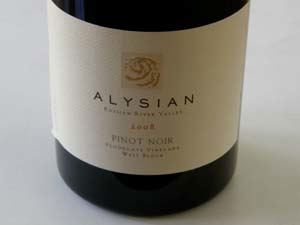 2008 Alysian Floodgate Vineyard West Block Russian River Valley Pinot Noir 14.4% alc., pH 3.46, TA 0.69, 201 cases, $55. This vineyard is located in the Middle Reach and is one of Alysian’s estate properties. The West Block was planted in 1971 and is one of the oldest known plantings of Pinot Noir in the Russian River Valley. Yields are less than one ton per acre but Farrell insists that the vineyard be preserved. Martini clone. · Moderate reddish-purple color in the glass. Clean and pure aromas of fresh berry tart and plum sauce. Tasty core of black cherry and blackberry flavors with a hint of vanilla. Packed with flavor, yet crisp and light on its feet. Seamless, with a creamy mouth feel and spectacular persistence of perfectly ripe fruit on the refreshing finish. Still solid the next day from a previously opened and re-corked bottle. The whole package.
Kirk WESley Hubbard and Denise MARy Selyem are Pinot Noir specialists operating out of a small, garagiste winery in Sebastopol and sourcing fruit from premium Russian River Valley and Sonoma Coast vineyards. Denise is the daughter of Ed Selyem and both her and her spouse Kirk worked at Williams Selyem for several years before the winery was sold in 1997. Their winery is a two person operation, with the couple sharing all winemaking and winery management duties, and somehow still living together amicably. They are definitely “old school,” preferring to meet or talk with their customers personally, and have no need for employees, consultants or brokers to sell their wines. The two distinctive hallmarks of WesMar (pronounced “Wes-Mare”) Pinot Noir are consistency from one vintage to the next regardless of vineyard source (but not sameness), and remarkable aromatics. The winemaking regimen is very similar to that employed by Ed Selyem and Burt Williams at Williams Selyem and the resultant WesMar wines have similarities. All wines are bottled unfined and unfiltered. This year, Denise and Kirk plan to plant the first 2000 vines on a 2-acre block of their property in Sebastopol to establish an estate vineyard. A former apple orchard, the vineyard will be planted initially to Martini and Pommard clones. I spoke to Denise about the 2009 WesMar wines. She is quite fond of them, even preferring them to the magnificent 2007 vintage wines because of their superior balance and lower alcohols. She says they have great cellaring potential. (As a side note, I asked her what she and Kirk were drinking these days and she replied that they were often dipping into their stash of older Williams Selyem Pinot Noirs. Several wines from the early 1990s were “amazing” when drank recently.) I agree with Denise, this may be the best lineup of wines ever from WesMar.
2009 WesMar Russian River Valley Pinot Noir 14.1% alc., 280 cases, $35. From Salzgeber and Balletto vineyards. Denise says this will age as well as the vineyard-designated wines. · Moderately deep reddish-purple color in the glass. Lovely aromatics featuring well-spiced Bing cherries, nutmeg and cardamom. Medium-weight cherry core with added notes of dark raspberries and cranberries and the faintest oak in the background. Refreshingly crisp and silky smooth with a floral aromatic tone on the lively finish. My only nit is that the wine is lacking a bit in fruit intensity needed to balance the zesty acidity. Good.
2009 Wesmar Salzgeber Vineyard Russian River Valley Pinot Noir 14.1% alc., 97 cases, $40. Denise feels this is the best wine since 2004 when they began buying fruit from this vineyard and very traditional Russian River Valley in flavor. · Moderate reddish-purple hue in the glass. The nose needs time to open, but once it does, it is very appealing for its hi-tone aromas of cherries, strawberries, rose petals and graham. Relatively light in weight with charming redder fruits, firm tannins and lively acidity. Silky and elegant in style. Much better two days later from a previously opened and re-corked bottle. A shy wine currently that will benefit from decanting or further cellaring for at least 2 to 3 years. Very good (+).
2009 WesMar Hellenthal Vineyard Sonoma Coast Pinot Noir 13.8% alc., 315 cases, $50. 8 clones. A fickle vineyard that yielded exceptional grapes in this vintage. · Dark reddish-purple color in the glass. A complex, nuanced wine with exotic aromas of dark berry jam, spiced black plum, dark red rose petals, clove and lemongrass curry. Moderately intense black and purple stone bruits with a hint of black cherry cola, sassafras, and nutmeg with a riff of citrus peel on the finish. Velvety in the mouth with well-behaved fine-grain tannins and admirable length on the back end. Even more spicy the following day from a previously opened and re-corked bottle. Very good (+).
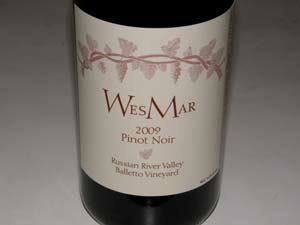 2009 WesMar Balletto Vineyard Russian River Valley Pinot Noir 14.0% alc., 195 cases, $40. Pommard clone. Eighth vintage from this vineyard. · Moderately dark reddish-purple color in the glass. Beguiling aromas of spiced cherries and berries with an exotic floral and musk element. Veers to the darker fruit side and clearly the most intensely flavored wine in the lineup. Long in the mouth, endowed with plush black cherry and fresh plum flavors, and an underpinning of cola and spice. Very impressive persistence on the flamboyant peacock finish. Even better later in the day from a previously opened and re-corked bottle and still better two days later. An All-American.
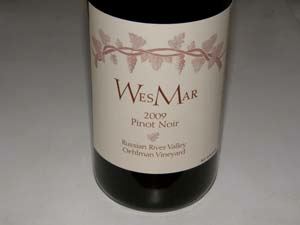 2009 WesMar Oehlman Vineyard Russian River Valley Pinot Noir 195 cases, $37. Martini clone. 12 acres of Martini clone planted in 1989 and farmed by Karl and Elaine Oehlman. · Moderately light reddish-purple color in the glass. Lovely aromas of fresh strawberries and cherries with hints of rose petals and oak vanillin. Medium-weighted bright flavors of spiced cherries and raspberries wrapped in supple tannins and focused by good acidity. Very soft in the mouth and seamless. Ready to drink now. A dead ringer for a Burt Williams crafted Russian River Valley Williams Selyem Pinot.
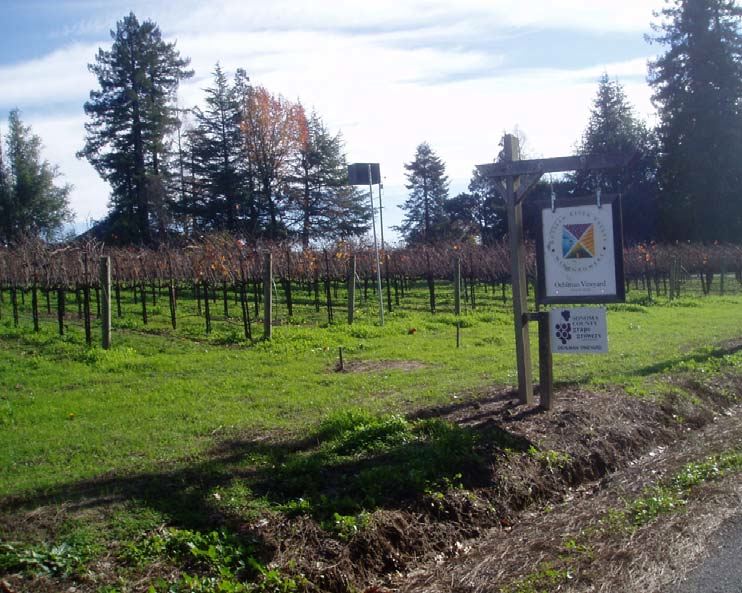
Two aspiring self-taught garagiste winemakers, Micah Wirth and Adrain Manspeaker, had few resources but a serious passion for wine. In 2006, they sourced some Russian River Valley grapes, invested in two French oak barrels and a small basket press, and produced 50 cases of Pinot Noir. The wine was a hit with friends, family and local wine industry professionals, spurring the pair to pursue winemaking more seriously. They created a label by combining their middle names (Joseph and Jewell) and labeled their wines with a noble-looking coat of arms. Several varietals are offered including Zinfandel and Sauvignon Blanc, but their focus remains on Pinot Noir. Micah Joseph Wirth is the fourth generation in a family of wine pioneers who was raised in the Alexander Valley of Sonoma County. He developed his early winemaking skills at ElvenGlade and Raptor Ridge Winery in Oregon where his father Christopher Wirth was the winemaker, and later at Gary Farrell where he was mentored by Gary Farrell and Susan Reed. Adrian Jewell Manspeaker was born and raised on the north coast of California. After an early career in construction, he relocated to Sonoma County and became caught up in the world of wine. He soon studied business management along with winemaking and viticulture at the University of California at Davis extension program, acquiring practical experience working harvest at C. Donatiello and later Peay Vineyards. Annual production is 1,000 cases. A tasting room is open daily at Cellars of Sonoma at 133 4th Street in Santa Rosa. The wines are also available through the winery’s online store at www.josephjewell.com. Follow the winery online at www.facebook.com/josephjewellwines and www.twitter.com/jjwines. The 2009 Pinot Noirs reviewed below were my first introduction to this young winery. I was attracted to the style which is one of balance, finesse, modest alcohols, and welcoming pinotosity. I can see plenty of Gary Farrell influence in these wines. Highly inviting now, the Joseph Jewell Pinot Noirs are easy to drink and sensibly priced.
2009 Joseph Jewell Russian River Valley Pinot Noir 13.9% alc., pH 3.54, TA 0.57, 125 cases $33. Hallberg, Floodgate and Appian Way vineyards. Clones 115, 667, 777, and Pommard 4 and 5. 100% de-stemmed. Aged 10 months in 20% new Francois Frères French oak barrels. · Moderate reddish-purple color in the glass. Aromas of dark cherries and berries, oak, and a little funk. Moderately intense, earth-kissed dark stone fruit and cherry cola juicy flavors wrapped in supple tannins. Well-crafted but flavors don’t excite. Decent.
2009 Joseph Jewell Appian Way Vineyards Russian River Valley Pinot Noir 13.6% alc., pH 3.47, TA 0.65, 125 cases, $45. The 2-acre Appian Way Vineyard is located just outside the town of Forestville and was planted in 2001 on a former organic apple orchard site. The clones are 115, 777 and Pommard, rooted in Goldridge soil. Tom and Kelly Keegan are the owners. 100% de-stemmed. Aged 10 months in 20% new Francois Frères French oak barrels. · Moderate reddish-purple color in the glass. A highly nuanced perfume jumps out of the glass with scents of black cherries, nutmeg, baking spice and leaf. Tasty black cherry core with a modest attack, finishing short with a slight floral undertone. The tannins are dry, firm and reserved, and the wine is easy to drink. Good (+).
2009 Joseph Jewell Floodgate Vineyard Russian River Valley Pinot Noir 13.8% alc., pH 3.42, TA 0.62, 250 cases, $42. Floodgate Vineyard is owned by Hambrecht Vineyards and farmed by Warren Burton. The name comes from its location next to Mark West Creek which floods every year and submerges the flat areas of the vineyard. This wine is sourced from three different blocks and includes clones 777, 667 and 115. 100% de-stemmed. Aged 10 months in 30% new Francois Frères and Rousseau French oak barrels. · Medium reddish-purple hue in the glass. Enticing aromatics featuring scents of dark red cherries and berries, exotic timber, and spice. Discreetly concentrated flavors of red stone fruits and red berries with accents of brown spice, fruit leather and herbs. Silky on the palate with well-mannered and supportive dusty tannins. Very good.
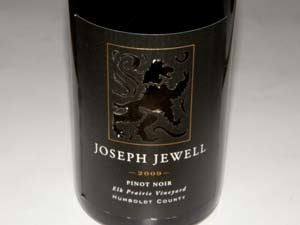 2009 Joseph Jewell Elk Prarie Vineyard Humboldt County Pinot Noir 13.9% alc., pH 3.39, TA 0.63, 100 cases, $39. The vineyard sits at 1,200 feet on Fruitland Ridge. Yields were 1.75 tons per acre. 100% de-stemmed. Aged 10 months in 44% new Francois Frères and Rousseau French oak barrels. · Lightest in color of the 2009 Pinot Noirs. Beguiling aromas of cherry essence with hints of strawberry, rose petal and spice. Delicious core of medium-weighted black cherry and raspberry flavors impressing the mid palate and carrying over with emphasis on the lengthy finish. Mild dusty tannins and well-honed acidity create a beautifully balanced wine that really draws you back to the glass. A perfect marriage of pedigreed vineyard and impeccable winemaking.
Greg La Follette has had a remarkable winemaking career, expanded by a deep understanding of the science behind the art of winemaking. He has an unparalleled grasp of yeast, specifically how different yeasts affect mouth feel and flavors in finished wines and this knowledge is a defining aspect of his winemaking talent. A graduate of University of California at Davis, La Follette’s interest and early studies in the Burgundian techniques of aging sur lies and batonage at Beaulieu Vineyards as a research viticulturist and enologist with wine master Andre Tchelistcheff caught the attention of winemaking icons such as Richard Graff and led to his future success. He later had winemaking stints at Yarra Ridge in Australia, and Jarvis in Napa Valley, followed by a viticulture consulting role at Kendall-Jackson. It was his later winemaking at Flowers Vineyard & Winery beginning in 1996 that linked his name to California Pinot Noir. The winery he built at Flowers is still considered one of the very best gravity flow, green wineries in the world. He founded Tandem Wines in 2001 and began a successful career as an international vineyard and winery consultant. He designed or redesigned fourteen wineries worldwide and was a consulting designing winemaker for the new University of California at Davis teaching winery. La Follette Wines was launched in 2010 after it morphed from Tandem Winery following its purchase by Pete Kight, proprietor of Quivera Vineyards & Winery in Dry Creek Valley. A stated goal of the new eponymous label, owned by Kight and La Follette, is to make wines more affordable than other hand-crafted California wines of similar pedigree. Both Pinot Noir and Chardonnay are produced from cool climate Sonoma County and Mendocino County vineyards that La Follette has worked with over the years (see map below). The La Follette label depicts an illustration found in a rare first edition French manual on viticulture published in 1847. La Follette often escapes safe winemaking techniques, preferring uncharted methods that often lead to exciting wines. He tends to favor the use of a significant percentage of whole clusters in his Pinot Noir fermentations which are carried out in open-top fermenters with native yeasts. Malolactic fermentations in barrel are also natural. For the 2009 vintage reviewed below, the wines were aged 10 months in French oak barrels. The assistant winemaker at La Follette Wines is California native Simone Sequeira. La Follette wines are sold primarily through a mailing list with limited retail and restaurant distribution. The winery does not have a tasting room or open visitor access, but once a month from February through August, tasting is available with winemaker Greg La Follette. Private Wine Events are also available. Visit the website at www.lafollettewines.com for further information. The winery will be pouring at the 3rd Annual Pinot Days Southern California Grand Festival January 28, 2012. I found the 2009 Pinot Noirs to be bold expressions of Pinot Noir with dreamy textures, well-mannered tannins, and vineyard-specific character. My only nit would be that the use of oak is a bit heavy-handed, although this will undoubtedly become less prominent in the wines with further bottle aging.
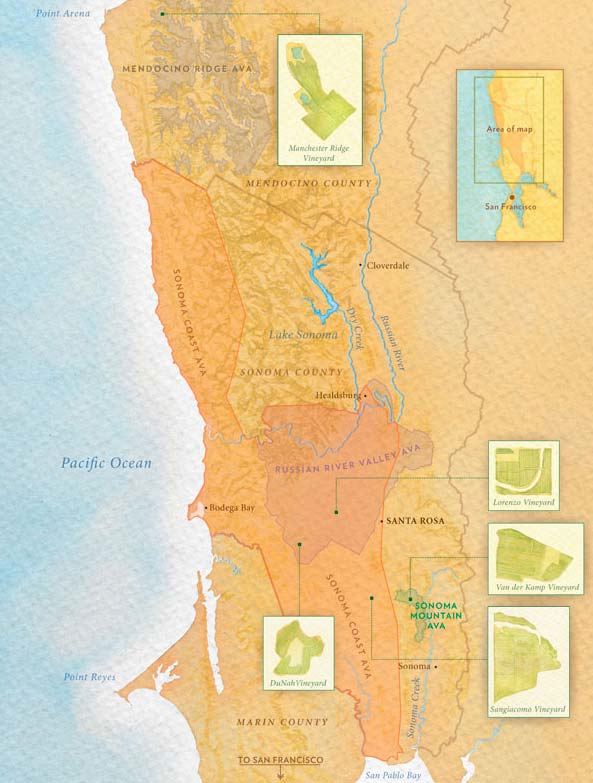
2009 La Follette Dunah Vineyard Russian River Valley Pinot Noir 13.6% alc., pH 3.46, TA 0.72, 207 cases, $49.99. This vineyard is located at the southwestern outpost of the Russian River Valley appellation. The 10- acre vineyard was established in 1998 in Goldridge soil. Clones 115, 667 and Pommard. 100% de-stemmed. · Very darkly colored in the glass. Fruity nose offering appealing scents of black cherries and blackberry jam with a hint of wood spice and smoke. Densely fruited on the palate with a mix of dark red berries accented by oak-driven flavors of tar and tobacco. Soft in the mouth with well-managed firm tannins and tangy acidity on the finish. More sinewy Sonoma Coast than Russian River Valley in character. Needs time to integrate the oak, but will always be an oaky wine as evidenced by the prominent oak features one day after opening. Decent.
2009 La Follette Sangiacomo Vineyard Sonoma Coast Pinot Noir 15.5% alc., pH 3.60, TA 0.61, 480 cases, $39.99. Planted in 1998, this vineyard is located in the Petaluma Gap and is farmed by brothers Mike and Steve Sangiacomo and brother-in-law Mike Pucci. Clones 777, 114 and Swan. · Moderately dark reddish-purple color in the glass. Aromas of dark red berry jam, toasty oak and graham, becoming more fruity over time in the glass. Moderately dense core of ripe, sappy dark red berry fruit with under notes of oak char. The mouth feel is remarkably velvety and the wine is quite suave. Fruit intensity accelerates over time in the glass. Needs time to integrate the imposing oak. Good.
2009 La Follette Van Der Kamp Vineyard Sonoma Mountain Pinot Noir 14.6% alc., pH 3.61, TA 0.64, 429 cases, $39.99. The Van Der Kamp Vineyard sits at 1,400 feet above sea level overlooking the hamlet of Kenwood. The soil types include loam with volcanic material and decomposed river bed. Six clones are planted, dry-farmed, and cared for with organic treatments. Some whole cluster fermentation. Bottled unfiltered. · Moderate reddish-purple color in the glass. Subtle, but pleasing perfume of dark red fruits, spice, musk and oak. Remarkably flavored with an array of dark red stone fruits and berries matched perfectly with a firm backbone of ripe, dusty tannins. Very long in the mouth and juicy. This venerable vineyard delivers a unique old vine mountain experience. Very good (+).
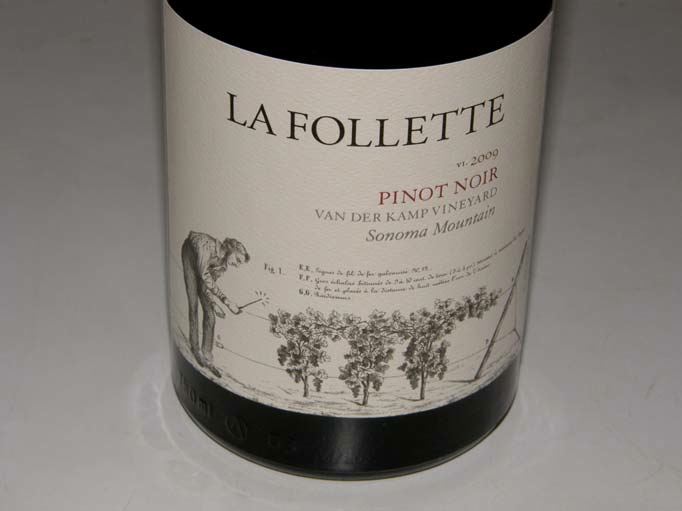 2009 La Follette Manchester Ridge Vineyard Mendocino Ridge Pinot Noir 14.7% alc., pH 3.74, TA 0.59, 494 cases, $49.99. This vineyard is located at 2,000 foot elevation overlooking the Pacific Ocean. The vines are rooted in decomposed sandstone. The relatively cool summer allows the fruit a long hang time. Clones 777, 115 and 114. 45% whole cluster. Bottled unfiltered. · Moderate reddish-purple color in the glass. Exotic perfume of purple rose petals, mushrooms, musk, frambiose and subtle oak. Hard to take your nose away from the glass. Delicious medium-weighted core of black raspberry and black cherry fruit clings to all reaches of the mouth, and persists with a vengeance on the aromatic finish. There are complimentary notes of cola and oak-driven mocha that add interest. Very satiny on the palate. I continue to be impressed by wines from this vineyard. Flat out beautiful.
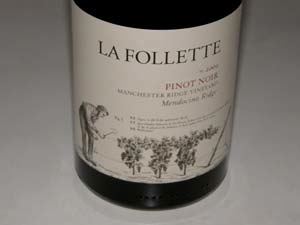
Owner and winemaker Kenneth Juhasz has achieved rapid success with his Auteur label which includes Pinot Noirs from Shea Vineyard in Oregon, Manchester Ridge Vineyard on the Mendocino Coast, and Sonoma Stage Vineyard in the Sonoma Coast appellation. Small lots of Chardonnay from the esteemed Hyde, Hanzell and Durell vineyards are offered as well. Juhasz has a varied winemaking background, having worked in wineries throughout California, Oregon and New Zealand. He currently consults for several wineries including The Donum Estate and Robert Stemmler labels, Pali Wine Company and Semper. Total production is 1,200 cases, with most of the wine sold directly through a mailing list at www.auteurwines.com. For the 2009 vintage, the winery’s label has been changed to offer a more mature and sophisticated expression of the brand and I feel the goal has been achieved.
2009 Auteur Sonoma Stage Vineyard Sonoma Coast Pinot Noir 14.2% alc., 145 cases, $60. This vineyard is heavily influenced by coastal fog and wind steaming through the Petaluma Gap. 50% Calera and 50% Swan clones. 10% whole cluster native fermentations. Aged in 50% new tight grain French oak barrels. · Moderately dark reddish-purple color in the glass. Brooding aromas of black raspberries, blackberries and wood smoke. Oak-inflected (tarry) flavors of black stone fruits and berries with a grilled fruit note. The tannins are firm and supportive and the wine finishes big with fruity persistence. Better later in the day from an opened bottle showing better integration of oak. This wine needs a few years in bottle for assimilation of the oak-driven aromas and flavors. Good.
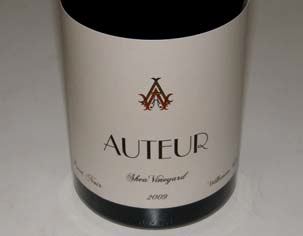 2009 Auteur Back Block Reserve Shea Vineyard Willamette Valley Pinot Noir 14.6% alc., 69 cases, $75. Three favorite barrels in 2009 from Shea Vineyard. 10% whole cluster. 10 day cold soak, 7 day post fermentation maceration. Aged in 2 new French oak barrels and 1 1-year-old French oak barrel. · Dark reddish-purple color in the glass. The nose is closed for business offering demure aromas of nondescript darker fruits and forest floor. The nose takes on a roasted, pruney note over time. Very ripe array of plush dark fruits including black plum and cassis with accents of dark chocolate that are currently buried in prodigious tannins. A muscular wine that has potential, but veers too far to the ripe side for me. Good (+).
A well-established winery that has been crafting Chardonnay since 1988 and Pinot Noir since 1995. The wines are a joint effort between winemakers James Hall and Anne Moses and the sales and marketing team of Donald and Heather Patz. The Sonoma Coast Pinot Noir is a benchmark for that appellation and their other single-vineyard Pinot Noirs are consistently rated highly. They source grapes from regions ranging from Mendocino County to the Santa Lucia Highlands. Production is approximately 10,000 cases of Pinot Noir and 15,000 cases of Chardonnay annually. The Pinot Noirs reviewed here were fermented with 15% to 20% whole clusters and undergo multi-yeast (wild and cultured) fermentations. Following 100% malolactic fermentation in barrel, the wines were aged in Burgundian French oak barrels and bottled without fining or filtration. The wines tend to be full-bodied and darkly colored with very ripe fruit expression in a muscular style. The Chardonnays are whole-cluster pressed, fermented with 100% indigenous yeast, aged sur lie with weekly stirring, 100% malolactic fermentation in barrel, aged in 40% new Burgundian French oak barrels, and bottled without filtration. The Chardonnays are very classically styled with a modest oak imprint and impeccable balance. The wines are sold through a mailing list, on the website (www.patzhall.com) and through the fine wine retail marketplace. A wine tasting salon is located in Napa which is available for private, seated tasting by reservation (707-265-7700).
2009 Patz & Hall Jenkins Ranch Sonoma Coast Pinot Noir 15.8% alc., 437 cases, $55. This 18-acre vineyard was planted in 2001 by renowned viticulturist Charlie Chenoweth and is located on a set of hillsides sheltered from the coastal influences of the Petaluma Gap. Clones 667, 115 and 777. · Inky dark color in the glass. Appealing aromas of dark red rose petals, darker fruits, berry glaze and oak spice. Ripe and sappy core of blackberry and black plum fruit with a slight beet root, woodsy and savory bent. Full-bodied with well proportioned tannins and nicely integrated alcohol with a cut of citrusy acid on the back end. Still fine the next day from a previously opened and re-corked bottle. Good.
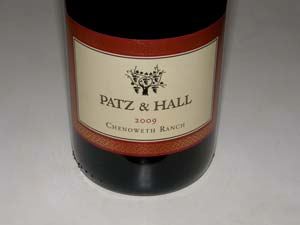 2009 Patz & Hall Chenowith Ranch Russian River Valley Pinot Noir 14.8% alc., 635 cases, $55. This 7-acre vineyard was planted by Charlie Chenoweth on a knoll above his family’s homestead in Green Valley on the site of a former apple orchard. The vineyard was planted exclusively for Patz & Hall to an assortment of Dijon clones. Sixth vintage as a vineyard-designate for Patz & Hall. · Dark reddish-purple color in the glass. A beautifully composed wine with great character. Aromas of black cherries, herbs, spice, oak and jam on biscuit picking up intensity over time in the glass. Dense and earthy, deep and darkly fruited with accents of anise. The wine displays well-mannered tannins and a good spark of acidity on the very long finish. Continues to draw you in over time in the glass and is even better the following day from a previously opened and re-corked bottle.
2009 Patz & Hall Hyde Vineyard Carneros Pinot Noir 14.2% alc., 858 cases, $65. Patz & Hall has worked with Larry Hyde since 1990 and crafted a Pinot Noir from the Hyde Vineyard since 1996. The wine contains an array of clones but primarily Hyde-Calera selection and Swan clone. · Moderately dark reddish-purple color in the glass. Shy perfume of dark strawberry jam on toast, rose hips tea and spice. Dense, dark fruit flavors which really impress the mid palate. A bit linear and fruit-driven at this stage with noticeable oak in the background and frisky tannins. I sense plenty of potential in this wine but it will require patience. About the same the following day from a previously opened and re-corked bottle. Very good.
2009 Patz & Hall Pisoni Vineyard Santa Lucia Highlands Pinot Noir 14.9% alc., 526 cases, $85. 13th vintaqe for Patz & Hall from this vineyard. Fruit is sourced from original plantings dating to the early 1980s. · Moderately dark reddish-purple color in the glass. Shy and nondescript with delicate aromas of spiced dark berries, underbrush and hickory. Big-boned core of dark berry, black stone, and Hoison sauce flavors buried by aggressive tannins. Fruit-driven and primary at this stage, needing several years in the cellar to soften the tannins. Even then, will need protein (a steak for example) to ameliorate the tannins. Good (+).
2009 Patz & Hall Zio Tony Ranch Russian River Valley Chardonnay 14.2% alc., 592 cases, $60. This vineyard, planted in 1990, is owned and farmed by the Martinelli family and is planted to Dijon clones 76 and 95 on well-drained, low-vigor, Goldridge sandy loam soils. · Light straw color in the glass. Aromas of citrus, almond paste, fig, soy and polished wood. Moderately intense flavors of yellow stone fruits, and citrus with roasted nuts and spice in the background. Soft on the palate with a very good cut of acidity and impressive persistence on the dry finish. Very good.
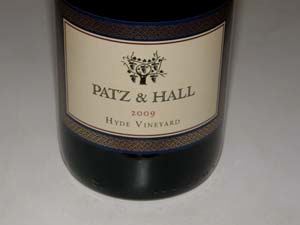 2009 Patz & Hall Hyde Vineyard Carneros Chardonnay 14.2% alc., 896 cases, $55. Hyde Vineyard is an iconic source of Chardonnay in Carneros. The Hyde-Wente selection in this wine is planted on sandy, clay loam, offering very low vigor and excellent drainage. · Light straw color in the glass. Interesting aromatics featuring scents of orange peel, walnuts, vitamins, shoe box and petrichor. Reserved and suave on the palate with citrus flavors accented by notes of baked apple, pear and baking spices. Slightly creamy with bright mineral-driven acidity on the refreshingly crisp finish.
Peay Vineyards is a first generation family winery. Husband and wife, Nick Peay and Vanessa Wong, grow and make the wine, and brother Andy Peay and his spouse Ami sell the wine and run the business. All wines are made from grapes grown on the Peay Vineyards’ 53-acre estate vineyard located in the far northwestern corner of the Sonoma Coast, 4 miles from the Pacific Ocean at Sea Ranch. The estate consists of 35 acres of Pinot Noir, 8 acres of Syrah, 7 acres of Chardonnay, 1.8 acres of Viognier, 0.4 acres of Rousanne and 0.2 acres of Marsanne. Winemaker Vanessa Wong left her position as winemaker at Peter Michael Winery in 2001 to help launch Peay Vineyards. She formerly worked at Chateau Lafite-Rothschild, Domaine Jean Gros and Hirsch Winery. Nick Peay is a University of California at Davis trained veteran winemaker and works side-by-side with the full-time vineyard crew of 8 workers. Farming is organic and only bio-diesel is used at the vineyard. Solar power is employed at both the vineyard and winery. Some grapes are sold to Williams Selyem and Failla wineries for their Peay vineyard-designate wines. The 2009 growing season at Peay Vineyards was ideal featuring a sunny and warm but not hot summer that allowed steady growth and an evenly paced maturation of the vines. Vanessa Wong noted in the Peay newsletter, “Everything fell into place for a perfect vintage.” Andy Peay told Josh Raynolds, “On the coast, 2009, as a vintage, doesn’t have a peer.” The wines are very attractive now but are built for the long haul. The annual production of 3,900 cases is sold through a mailing list (www.peayvineyards.com), an online wine store, and through limited retail and restaurant distribution. Declassified juice is sold under the value-priced Cep label. Peay Vineyards was given the prestigious Winery of the Year 2009 award by the San Francisco Chronicle. The winery publishes one of the best newsletters in the Pinot Noir universe. Besides the Pinot Noirs reviewed here, there is a Pomarium Estate bottling composed primarily of Dijon clones. Vineyard tours are available by advanced appointment.
2009 Peay Vineyards Sonoma Coast Pinot Noir 13.5% alc., $40. · Moderately light reddish-purple color in the glass. The wine offers a complex array of aromas including dark red cherries and berries, underbrush, leaf, violets and a hint of oak. Unusually complex and layered for an appellation bottling offering flavors of black cherries, black raspberries, cola, dark chocolate and spice. Nicely composed and very user friendly with well-mannered dry tannins. Reminds of a Russian River Valley Pinot Noir. A solid, even special wine for current every day drinking. Good (+).
2009 Peay Vineyards Scallop Shelf Estate Sonoma Coast Pinot Noir 13.8% alc., 850 cases, $54. This wine takes its name from the fossils found in the soil at this site. It is a blend of six clones, including Pommard. · Moderately light reddish-purple color in the glass. Brooding aromas of red and black fruits with toasty oak and spice. Delicious core of red plums and assorted berries accented with mineral qualities. Juicy and bright with lively acidity and an appealing softness in the mouth. A sophisticated wine of great promise that will require a few years more in bottle for full enjoyment. Very good.
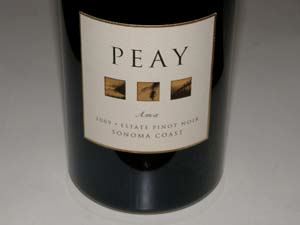 2009 Peay Vineyards Ama Estate Sonoma Coast Pinot Noir 14.2% alc., 650 cases, $46. Inaugural vintage from a section of the Peay Vineyard planted to a suitcase clone and Dijon clone 828. · Moderate reddish-purple color in the glass. Inviting aromas of black raspberries, black cherries and potpourri with a hint of oak cask. Very charming on the palate with dancing flavors of dark red and black berries and cherries with a complimentary hint of spice and cola. Maybe some pheromones are lurking as well. A bit daunting, brooding and linear now and sporting plenty of ripe tannins, but this wine has sensational upside potential. More expressive and interesting the next day from a previously opened and re-corked bottle.
Many years ago before the widespread interest in California Pinot Noir, the Ferrer family planted three-quarters of Gloria Ferrer Caves & Vineyards’ 335-acre Carneros estate vines exclusively to Pinot Noir. (the remaining vines were planted to Chardonnay). As the winery celebrates its 25th anniversary, Gloria Ferrer has a renewed commitment to still Pinot Noir and Chardonnay. Executive winemaker Bob Iantosca and winemaker Steven Urberg are crafting Pinot Noirs of balance and elegance from several clones including Comar 538 (an Alsatian clone), Martini, Wente, Wädenswil, Pommard 4 and Dijon 115. The wines have uncommon aromas and flavors because of this unique clonal mix, setting them apart from many California Pinot Noirs that are powered solely by Dijon clones. The grapes are 100% de-stemmed and generally the wines are aged for 9 months in barrel. Some wines are filtered. Iantosca crafts about 20,000 cases of five Pinot Noirs that fill out the winery’s lineup of eight sparkling wines, one Merlot and one Chardonnay. The last vintages of Gloria Ferrer Pinot Noir I reviewed was 2004 and 2005 and the wines were excellent. The Gloria Ferrer still Pinot Noirs are sold at the winery and are available on the website at www.gloriaferrer.com. There are sensibly priced considering the high quality. The charming Spanish mission style visitor center on Highway 121 in Sonoma Carneros is open daily for tasting from 10:00 AM to 5:00 PM and guided tours are offered as well. Bring a hat, it’s nearly always breezy here.
2008 Gloria Ferrer Estate Grown Carneros Pinot Noir 13.9% alc., pH 3.78, TA 0.59, 14,420 cases, $22. 17th Carneros Pinot Noir produced here. Made exclusively from free-run juice. Barrel aged for 9 months in 33% new French oak barrels and bottled unfined. · Moderately light reddish-purple color in the glass. Aromas of spiced dark red berries, seasoned oak, and graham. Tasty core of dark berries and fresh plums with hints of smoky oak, earth and savory herbs. Medium-weighted with well proportioned tannins and a welcoming crispness on the dry finish. Good.
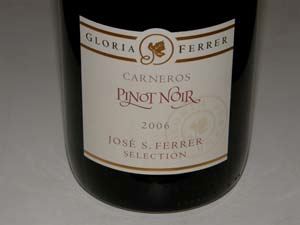 2006 Gloria Ferrer José S. Ferrer Selection Carneros Pinot Noir 13.5% alc., pH 3.72, TA 0.54, 1,000 cases, $35. A selection of the most exceptional blocks from the estate vineyard. Meticulous cluster and shoot thinning are employed. The winemaker chose the 43 best barrels among these special lots to compose the blend. Clones include 115, Comar 538, 2A and Martini. All lots were de-stemmed and cold soaked for 3 days before fermentation. Only free-run juice was used to create the final blend. The wine was aged for 9 months in 36% new French oak barrels and bottled unfined. · Moderately light reddish-purple hue in the glass. Aromas of dark berry reduction sauce, underbrush, forest floor and oak. Soft and seductive on the palate with earthbound flavors of black raspberries and black cherries with a hint of anise and spice. Very polished with gossamer tannins and a smooth, velvety finish of some length. This wine has benefited from the extra time in bottle and is drinking beautifully now. Very good.
Frederic Nunes grew up farming row crops with his father in Salinas, California and by age 12 had a small vineyard adjacent his house. When it came time to retire from his career as a firefighting helicopter pilot, he took a path back to farming. With a degree in systematic biology and ecology and his childhood background, he was equipped to take over his grandfather’s ranch in the Russian River Valley. In 1997, Frederic and his spouse Wendy Fowler Nunes sold everything they owned and remodeled a caretaker’s house on the family ranch. In the spring of 2000 they planted ten different blocks of Pinot Noir and the first vintages were sold to well-known wineries. Spurred on by the desire to make their own wine, the couple licensed the pig barn on the property as a winery, named it St. Rose, and began holding back grapes in 2004 to make their own wine. St. Rose Pinot Noir is made with grapes selected from favorite blocks in the Nunes Vineyard. The 2009 Nunes Vineyard Pinot Noirs are their sixth vintage. Two wines were produced in 2009 and are reviewed here. The St. Rose Pinot Noirs may be obtained by phone (707-837-1927) or email (www.saintrosewinery.com).
2009 St. Rose Nunes Vineyard Ten Block Russian River Valley Pinot Noir 14.6% alc., ph 3.60, TA 0.61, 91 cases, $38. Clones 115, 777, 667 and 114. Aged 14 months in 50% new Francois Frères French oak barrels. · Moderately dark reddish-purple color in the glass. Aromas of blackberries, black raspberries with notes of underbrush and barrel spice, drifting over time in the glass to very ripe aromas of prune and black currant. Fairly opulent with plenty of sweet, sappy dark red and black fruit, particularly black cherry. Sidecar of cola, clove and raisin. Very smooth mouth feel with bright acidity on the short finish. The appeal is weighed down by the fruit ripeness. Good.
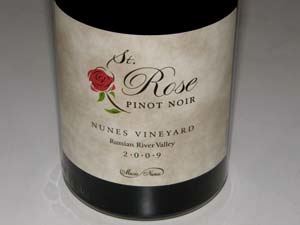 2009 St. Rose Nunes Vineyard 777 Russian River Valley Pinot Noir 13.7% alc., pH 3.60, TA 0.61, 94 cases, $40. Special barrels of clone 777 were unique and it was decided not to blend them. Aged 14 months in 50% new Francois Frères French oak barrels. · Moderately dark reddish-purple hue in the glass. Demure aromas of black cherry and raspberry fruits with subtle hints of underbrush, sage and sandalwood. Tasty core of raspberry, cherry and cranberry fruit leaving an impression on the mid palate and clinging to the long flowery finish with a vengeance. Medium weighted with admirable elegance, well-concealed tannins, and a welcoming spark of acidity adding crispness to the fruit. I am usually not a fan of single clone Pinot Noir but this wine is special. Very good (+).
It was two years ago when I reviewed the 2008 vintage of Kokomo Pinot Noirs. Proprietor and winemaker Eric Miller is a native of Kokomo, Indiana, who studied at University of California at Davis and learned his trade at Belvedere Winery and Amphora Winery. Along with his best friend and college roommate, Josh Bartels, and winegrower partner Randy Peters, he launched Kokomo Winery in Dry Creek Valley in 2004. The winery is located in a small warehouse complex with other noted producers including Amphora Winery, Papapietro Perry Winery and Peterson Winery. Multiple varietal wines are produced, both whites and reds. Three Pinot Noirs are offered from the 2009 vintage. Kokomo wines are sold online at www.kokomowines.com. The winery’s tasting room is incorporated into the winery’s cellar and is open daily. I considered the wines reviewed below well-mannered but lacked aromatic intensity and interest, and in the case of the Windsor Oaks bottling, veered to the overripe side. The Reserve was very enjoyable and is an excellent cellar candidate.
2009 Kokomo Winery Windsor Oaks Vineyard Russian River Valley Pinot Noir 14.5% alc., 199 cases, $36. This 250-acre vineyard is on the warmer eastern edge of the Russian River Valley. A blend of clones 114, 777 and 667. 25% whole cluster, native Burgundian yeast fermentation. Aged in 30% new French oak barrels. · Medium reddish-purple color in the glass. The nose is very shy offering demure aromas of dark cherries, rose petal and stem. Ripe and sweet black cherry and red plum flavors with a slight roasted character. Soft tannins, juicy acidity on the finish and well-managed oak. Plain and seemingly watered down. Even more roasted character the following day from a previously opened and re-corked bottle. Decent.
2009 Kokomo Winery Gopher Hill Peters Vineyard Sonoma Coast Pinot Noir 14.1% alc., 200 cases, $38. This vineyard is located where a former Gravenstein apple orchard stood, 10 miles from the Pacific Coast as the crow flies. Soils are Goldridge sandy loam. Clone 2A. Aged in 30% new French oak barrels. · Moderate reddish-purple color in the glass. Aromas of very ripe dark red berries, spice, brier and oak caramel. Medium weight flavors of sweet dark red cherries and berries with mushroom, green bean and citrus in the background. Soft and elegant on the palate with supple tannins, but doesn’t deliver a lot of flavor interest. Good.
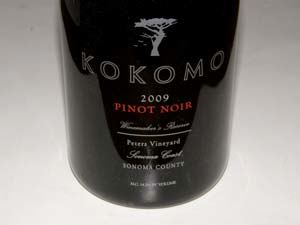 2009 Kokomo Winery Peters Vineyard Winemaker’s Reserve Sonoma Coast Pinot Noir 14.1% alc., 300 cases, $48. Pommard clone. 25% whole cluster, aged in French oak barrels. · Moderately deep reddish-purple color in the glass. The nose is rather nondescript, offering subtle scents of black plum and oak. Sweet, sappy and ripe dark red cherry and berry flavors with a hint of spice and raisin. More flavor interest, nuance and persistence than the Gopher Hill bottling. Unfolds slowly in the glass displaying admirable finesse. Even better the following day from a previously opened and re-corked bottle. Good (+).
This label is a small side project from Chad and Mary Melville of Melville Winery in the Sta. Rita Hills. The couple produce small lots of Pinot Noir and Syrah from carefully selected vineyards in the Sta. Rita Hills. Whole cluster fermentation is the signature. All grapes are purchased by the acre and the Melvilles have a strong voice in how the vines in their vineyard sources are managed. I reviewed the 2008 vintage Samsara Pinot Noirs in March of 2011 and found them to be modern, intensely flavored, fruit-driven Pinot Noirs with a twist and interest created by the significant whole cluster inclusion. I recently sampled three of the 2009 Samsara Pinot Noirs from three vineyards different from those in 2008 and was much less enamored by the wines. All three wines were very similar in flavor profile and the aromatics were lacking (perhaps because they had spent less time in bottle compared to the 2008s I sampled previously). Rather monotone in character, these wines could be from anywhere. All wines are unfined and unfiltered. I would recommend cellaring these wines for at least a year or two before opening, but these wines will still disappoint those looking for elegance and complexity. Samsara wines are sold primarily through a priority release list at www.samsarawine.com.
2009 Samsara Rancho La Viña Vineyards Sta. Rita Hills Pinot Noir 13.3% alc., 120 cases, $46. · Darkly colored in the glass. Some reduction on the nose with aromas of black berries, earth, charred oak and campfire. Full-bodied core of purple fruit in a burly, husky style finishing with black grape fruit and astringent tannins. A little softer in the mouth the following day from a previously opened and re-corked bottle with less oak on the nose indicating the wine will benefit from more time in bottle. Decent.
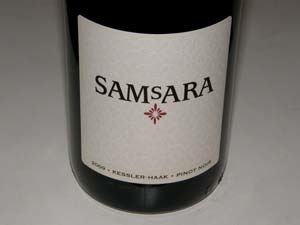 2009 Samsara Kesslar-Haak Vineyards Sta. Rita Hills Pinot Noir 14.4% alc., 162 cases, $38. · Dark reddish-purple color in the glass. Very reserved nose offering hints of dark berries, spice, stem and oak. The fruit-powered attack of plum and black raspberry is flanked by mildly aggressive tannins, with the fruit flavors falling off quickly on the finish. Tasted the next day from a previously opened and re-corked bottle, the aromatics were still lacking, but the fruit was more vibrant and appealing. Good (+).
2009 Samsara Melville Vineyard Sta. Rita Hills Pinot Noir 14.0% alc., 120 cases, $48. · Moderately dark reddish-purple color in the glass. Very non-descriptive and reserved nose offering hints of forest floor and oak. Richly fruited and dense with flavors of black raspberries and Hoison sauce lingering on the fruit-filled finish. Big, slightly harsh tannins make this a fatiguing wine. Still tannic the next day from a previously opened and re-corked bottle. Needs protein (read steak) to neutralize the tannins. Decent.
When it comes to excellent value-priced Pinot Noir and Chardonnay, nobody in California does it better than Hahn Estates. Owned by the Nicolaus Hahn Family, the Hahn Family now owns 650 vineyard acres in the Santa Lucia Highlands appellation. Nicolaus (“Nicky”) Hahn’s pioneering effort led to the creation of the Santa Lucia Highlands AVA in 1991. Hahn SLH Estate Winery produces a broad portfolio of California wines ranging from the ultra-premium Lucienne and Hahn SLH Estate wine brands from the Santa Lucia Highlands to the distinctive premium Hahn Winery and Smith & Hook Winery brands primarily from the Central Coast and Monterey County. The winemaker is Paul Clifton. Hahn SLH Estate Culinary Center, a wine trade education facility, was recently approved for construction. Upon completion, the Center will be a 2,500 square foot educational venue in Soledad, California sharing the panoramic views of the Hahn Estate Vineyard and overlooking the Santa Lucia Highlands. The Center will include a comfortable space for seminars and wine tastings as well as a professional demonstration kitchen so that small groups can share in the preparation and enjoyment of gourmet and local foods with Hahn Estate Chef Brian Overhauser. What Hahn SLH Estate is doing is nothing new to other wine regions, but it is the first of its kind in Monterey County. Hahn wines are widely distributed in the retail marketplace and are sold on the website at www.hahnestates.com. The winery’s tasting room at the winery in Soledad is open daily. Note: the 2010 Hahn Winery Monterey Pinot Noir was recently reviewed in The PinotFile. At $12 (often discounted to $7.99), this is an amazing value and has been the go-to Pinot Noir for many of my friends for daily drinking and Holiday parties. Hahn impresses with their entire line of reasonably priced superb wines.
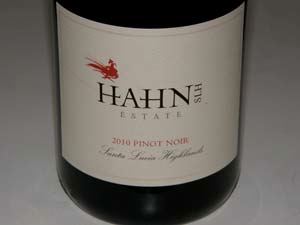 2010 Hahn Estate SLH Santa Lucia Highlands Pinot Noir 14.5% alc., pH 3.81, TA 0.62, $35. 65% Doctor’s Vineyard, 22% Smith Vineyard and 13% Lone Oak Vineyard. Clones are Pommard 5, 667, 777, 115 and 2A. · Moderately dark reddish-purple color in the glass. Very enticing nose offering bright aromas of black cherry liquor, sassafras, toasted brioche and oak spice. Delicious essence of fresh black cherries with impressive mid palate presence. Relatively full-bodied with mild dusty tannins. Accents of red velvet cake and cola add interest. Drinking nicely now. Very good.
2010 Hahn Winery SLH Chardonnay 14.0% alc., pH 3.43, TA 0.76, $12. Aged in 18% new French oak. · Light straw color in the glass. Delicate but pleasing aromas of pears, white peaches, cream soda, honey, caramel and pineapple. Very lightly weighted but tasty, with clean and bright baked pear, fig and banana flavors leaving behind an impression of lemon meringue. You won’t find a better Chardonnay at this price in the marketplace. Good.
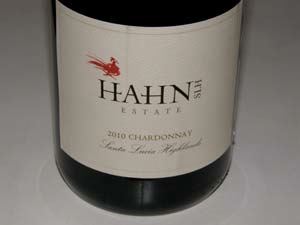 2010 Hahn Estate SLH Santa Lucia Highlands Chardonnay 14.5% alc., pH 3.47, TA 0.60, $25. 65% Lone Oak Vineyard and 35% Hook Ranch Vineyard. A blend of clones 76 and 96. 100% barrel fermented. Aged in 33% new French oak. · Light straw color and clear in the glass. Aromas of melon, lemon curd, honey and petrichor fading a bit over time in the glass. Reserved, medium-bodied and a bit thin in the middle, but offering tasty baked pear and white peach flavors with a hint of baking spice that linger awhile on the finish. Seamless and easy to drink. Good (+).
2009 Sequana Sundawg Ridge Vineyard Green Valley of Russian River Valley Pinot Noir 13.8% alc., pH 3.46, TA 0.64, 523 cases, $50. 6.9-acre sustainably-farmed vineyard planted by the Kensler family in 1999. Goldridge soils. Sequana is the sole producer of wine from this vineyard. Winemaker is James MacPhail. Clones are Pommard, 115 and Calera. Aged 11 months in 40% new French oak barrels. · Moderately dark reddish-purple color in the glass. The nose offers little more than oak-driven aromas. Full-bodied and fruity, but not complex, featuring darker cherries and berries and mild fine-grain tannins. A little more enticing the following day from a previously opened and re-corked bottle, but still dominated by mocha java aromas and flavors from oak. Cellaring may allow for more oak integration over time, but this will always be an oaky wine. Decent.
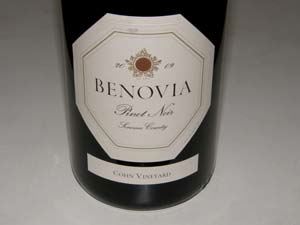 2009 Benovia Cohn Vineyard Sonoma County Pinot Noir 14.1% alc., $62. · Medium reddish-purple color in the glass. The nose is enticing with bright aromas of exotic dark berries, spice and mild toasty oak. Moderately dense with a delicious core of dark plum and dark berry fruit which really impresses. A slight accent of cola and coffee is in the background. Silky in the mouth with supple tannins and impeccable balance. Much better the following day from a previously opened and re-corked bottle with luscious sweet fruit, less oak notes, and pleasing persistence on the back end. An old vine treasure. Very good.
 2008 Clary Ranch Sonoma Coast Pinot Noir 13.8% alc., 187 cases, $39.50. From an estate vineyard in the Petaluma Gap. Clones are Pommard 4, 667. Yields 1.4 tons per acre. Aged 30 months in 50% new French oak barrels. · Moderate reddish-purple color in the glass. Aromas of black fruits, leaf, eucalyptus, leather and oak. Big-boned flavors of black plum, blackberry, black currants and sassafras with an evident oak presence contributing a tarry note. The oak influence tends to recede over time in the glass and is less noticeable the following day from a previously opened and re-corked bottle, but the significant time in a high percentage of new oak has left its imprint. Good.
2010 The Forager Sonoma Coast Pinot Noir 14.4% alc., $17, screw cap. From Jonathan and Susan Pey (Pey-Marin). · Medium reddish-purple color in the glass. Fruity nose featuring black cherries and roasted plum with an undertone of dark caramel. Full ripe flavors of black cherries and dark berries with a sidecar of cola and sassafras. Medium-weight with well-behaved fine-grain tannins and a silky mouth feel. Very user friendly but less interesting over time in the glass. Decent.
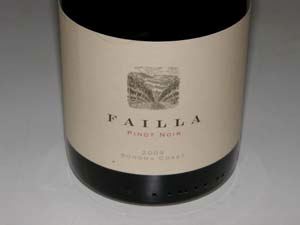 2009 Failla Sonoma Coast Pinot Noir 13.9% alc., $30. · Dark reddish-purple color in the glass. Complex nose offering scents of dark berries, brier, redwood, oak cask, bacon and rose petals. Fairly intense array of dark red raspberry and red plum flavors with a savory oak and floral undertone. Straightforward with a pleasingly rich mouth feel. Good (+).
2008 Mount Eden Vineyards Domaine Eden Santa Cruz Mountains Pinot Noir 15.0% alc., $32. This wine can easily be confused with Mount Eden Estate which is a horse of a different color. This is a newer brand from Mount Eden Vineyards that resulted from the purchase of the Cinnabar Winery and Vineyard (but not the brand or inventory) in late 2007. The main reason for the purchase was to acquire the winery because Mount Eden had outgrown its limited production facility. Most of the Domaine Eden Vineyard is planted to Pinot Noir. Since the soils are different, the Pinot Noir from Domaine Eden is completely different from the Mount Eden Pinot Noir even though it is vinified by the long time Mount Eden winemaker, Jeffrey Patterson. · Moderate reddish-purple color in the glass. The nose features aromas of slightly roasted darker fruits with oak-driven scents of tobacco, black tea and old cask. Fruity and linear offering black plum, blackberry jam, Concord grape and raisin flavors. An awkward overripe fruited wine that disappoints. Decent at best.
2010 Carmel Road Monterey Pinot Noir 13.5% alc., pH 3.75, TA 0.54, $20. Sourced from certified sustainable vineyards in the Arroyo Seco AVA (Panorama, Clark, Porter, Sainz and Mission Peak). Clones 667, 777, 115, 2A, 828, and 23. Aged 8 months in 97% French oak barrels (20% new), 2% in American oak barrels (1% new), and 1% stainless steel tanks. · Dark, deep purple color in the glass. Complex perfume of dark cherries and berries, grapes, spice, wood smoke, coffee bean and dried rose petals. Earthbound flavors of blackberries and boysenberries and cassis with a hint of spice and edible flowers. Medium-weighted with mild tannins and a welcoming silkiness in the mouth. Consistently one of the best value-priced Pinot Noirs in the marketplace. Good (+).
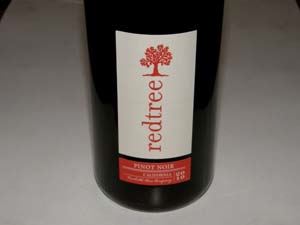 2010 Redtree California Pinot Noir 12.5% alc., $5.99, screw cap. · Moderately light reddish-purple color in the glass. Nicely perfumed with vivid aromas of cherries, red berries and complimentary oak. Lighter weight flavors of black cherries with a touch of herbs and spice. Clean and balanced with supple tannins, and although elegant in style, has enough structure for interest. A great daily drinker and a perfect picnic wine. Good.
Note: Redtree wines has been very successful in the marketplace and gained recognition with a number of beverage industry awards. Redtree received three consecutive Impact Hot Prospect Awards from 2008-2010, as well as being named a Best Buy and top five wine bargains from Consumer Reports. The brand was also named a Rising Star Growth Brand by Beverage Information Group three years running (2009-2011). The label is owned by Cecchetti Wine Company which was launched by wine industry veteran Roy Cecchetti in 2006. The company aims for consistent and fruit-forward wines of excellent value from throughout California with its Redtree, Line 39 and Backhouse wine brands.
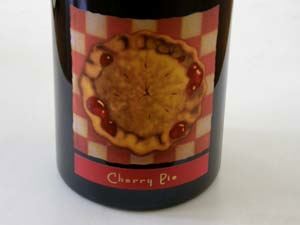 2009 Cherry Pie Stanly Ranch Vineyard Carneros Pinot Noir 14.5% alc., $50. · Moderately light reddish-purple color in the glass. The wine is cherry centric which, given the name, is no surprise. Flavors of crushed cherries, spice, sassafras and sandalwood in a medium to full-bodied style with complimentary oak and good staying power on the finish. Structurally firm but proportional to the fruit extract creating an overall impression of balance. Packs a little heat on the finish as it warms in the glass. Good.
2009 Aubert Ritchie Vineyard Sonoma Coast Chardonnay 15.1% alc., $80. · Light straw color and slightly cloudy (unfiltered) in the glass. Considerable oak and malolactic driven aromatics showing scents of butter on toast, baked apple, baking spice, cookie dough, toast and graham. Big and bountiful on the palate with flavors of very ripe white peaches, Asian pears, apple, roasted nuts and spice. Hard to resist if you like a decadent, full-blown style of Chardonnay. A meal by itself. Very good.
Embarrassment of Riches: Oregon
Nick and Sheila Nicholas established this small family winery in 2001 devoted primarily to Pinot Noir from estate grapes. 33 acres are owned and farmed in the Chehalem Mountains. The property was originally an overgrown walnut, hazelnut and plum orchard with a neglected Christmas tree forest and included a quaint farmhouse dating to 1902 and several wooden outhouses. The vineyard is planted in primarily Jory series soils at 450 to 650 foot elevation. Clones are Wädenswil, Pommard and Dijon 114, 115, 667 and 777. Plantings began in 2001 with additions in 2008. The L.I.V.E certified vineyard is farmed sustainably with both organic and biodynamic practices. Vineyard managers are Evan Bellinger and Buddy Beck. The winemaker is noted Oregon veteran Aron Hess (Daedalus and others). Production is about 1,000 cases annually of primarily Pinot Noir. Chardonnay will be added in near future. A tasting room is open daily at the junction of 99W and Highway 240 in Newberg. The wines are sold to a mailing list and through the winery’s online store at www.anamcaracellars.com. One of the appealing features of Willamette Valley Pinot Noir is that it shows considerable vintage variation. The Anam Cara Pinot Noirs in 2009 are more classic and forward in style in comparison with the 2008 vintage wines that were reviewed previously. The wines are lighter, elegant and very charming, yet have the balance for medium term aging. Because of the growing conditions in the 2009 vintage, less new oak was used than in 2008. I would drink these while you wait for the 2008 Pinot Noirs to come around. All wines are bottled in recycled US-made Ecoglass which has 25% less weight than Anam Cara’s previous glass bottles.
2009 Anam Cara Cellars Nicholas Estate Chehalem Mountains Oregon Pinot Noir 13.6% alc., 627 cases, $32. A mix of all clones (except 2A) in the estate vineyard with predominantly 667. Aged in 16% new French oak barrels. · Light reddish-purple color in the glass. The nose has mostly oak-driven aromas initially, but becomes more fruity over time in the glass offering scents of red raspberries and red cherries. The wine has a light weight core of juicy cherry and blueberry fruit with an underpinning of oak. A little more body than the Heather’s bottling. Silky in the mouth with very soft tannins. An easy drinker whose delicate fruit is outflanked by oak currently but the balance should improve over the next year in bottle. Good.
2009 Anam Cara Cellars Heather’s Vineyard Chehalem Mountains Oregon Pinot Noir 14.0% alc., 55 cases, $65. 100% Dijon 114. Aged in 22% 1-year-old and 78% 2-year-old French oak barrels. Intended to be the most elegant expression of the vineyard and thereby the lightest touch of French oak. From 10 rows of what are considered reserve quality vines, cropped to 1.5 tons per acre. This wine is named after the owners’ daughter. · Very light reddish-purple color in the glass. Terrific aromatics featuring an enticing perfume of red cherries, red raspberries, Christmas spice, herbs and crusty bread. Light in weight but flavorful, picking up intensity over time in the glass. Cherries are the theme with hints of savory herbs and oak. Silky and feminine in style like fine red lingerie. Very good.
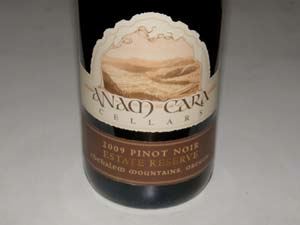 2009 Anam Cara Cellars Estate Reserve Chehalem Mountains Oregon Pinot Noir 14.0% alc., 240 cases, $42. From special sections and rows of the vineyard with Reserve potential and a best barrel selection. Yields 1.5 tons per acre. Clones are Pommard, 114, 115 and 777. Aged in 24% new French oak barrels. · Light reddish-purple color in the glass. Reserved but welcoming aromas of black cherries and darker red berries. Striking medium-bodied black cherry core which impresses the mid palate and lingers for half a minute on the finish. Smooth as a baby’s bottom with reserved tannins. Very classy and always the best wine in the Anam Cara stable. More reserved and elegant than the 2008 version of this wine, but more Pinot character.
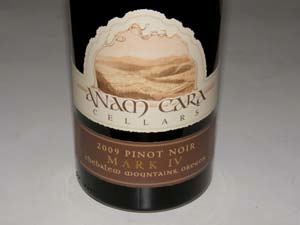 2009 Anam Cara Cellars Mark IV Chehalem Mountains Oregon Pinot Noir 14.0% alc., pH 3.50, TA 0.53, 55 cases, $65. A blend from the most intense barrels which can handle more new oak. 75% Dijon 777 with lesser amounts of 114, Pommard and 115. Aged 11 months in 22% new French oak barrels. Will not be released until the spring of 2012. · Light reddish-purple hue in the glass. The nose develops very slowly in the glass, reluctantly revealing aromas of dark red fruits and dark red rose petals. Similar to the Reserve in flavor profile but possessing a bigger tannic backbone. Seductive flavors of crushed black cherries, red raspberries and red currants with subtle complimentary oak and reigned in sinew. Smoothly fashioned with a long, scented finish. Not as expressive as it will be in a few years and may supersede the Reserve with a few years in the cellar. Very good (+).
Napa’s Craig Camp enlisted former Domaine Serene winemaker Tony Rynders to craft a Pinot Noir from the Willamette Valley beginning with the 2008 vintage. The wine is produced just outside of Gaston, Oregon, where Rynders makes his own wine under the Tendril label. With the 2009 vintage, Camp has acquired more vineyard sources than the previous vintage, offering in his words, “A more complex, layered Pinot Noir than any of these fine sites would have on their own.” Camp, the former president of Annie Amie Winery, developed a passion for Pinot Noir more than 30 years ago and began importing the Burgundy selections of Becky Wasserman, making frequent trips to the Burgundy estates she was representing. Camp is also the mind behind the Stepping Stone by Cornerstone label that offers a number of varietals from the Napa Valley. The 2009 Cornerstone Pinot Noir is composed of multiple clones from the Eola-Amity Hills (37%), Yamhill- Carlton District(21%), Chehalem Mountains (21%), Ribbon Ridge (13%), and Dundee Hills (8%) sub-appellations of the Willamette Valley. The wine was aged 14 months in 60% new French oak barrels. Tasting is offered at the Yountville Tasting Center in the Napa Valley at 6505 Washington Street. The wine is sold through a mailing list and offered online at www.cornerstonecellars.com. There is limited retail and restaurant distribution.
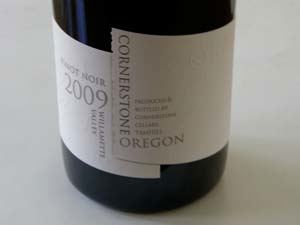 2009 Cornerstone Willamette Valley Oregon Pinot Noir 13.9% alc., 400 cases, $50. · Moderately light reddish-purple color in the glass. Nicely perfumed with aromas of black cherries and spice. Delicious medium weighted flavors of blueberries, black cherries and black raspberries with an emphasis on cherry. Riffs of cola and spice add interest. Juicy with restrained, dusty tannins, well-honed acidity and the slightest complimentary oak in the background. The flavors are ahead of the aromas at this stage. A beautiful wine that shows impeccable balance for the cellar but can be thoroughly enjoyed now. An All-American for 2012.
Noble Pig Winery was established in 2008 by winemaker Cathy Pollack and her physician spouse Henry. The couple spent most of their life in Southern California where Henry had a successful practice, but health problems cut his career short and they change direction. The family moved to Davis, California where Cathy enrolled in the school’s enology and viticulture program. For her thesis, Cathy formulated a plan for a marketing and promotional program for a hypothetical winery she dubbed Noble Pig. She was inspired by a story from the 19th century of an English King who presented the Japanese emperor a prized Berkshire pig to strengthen their relations. The Pollacks found a home in the McMinnville AVA where they bought 88 acres and planted the first 4 acres of Pinot Noir in 2010. The initial releases are from purchased fruit while the estate vineyard matures. Eventually, they plan to produce about 5,000 cases annually.
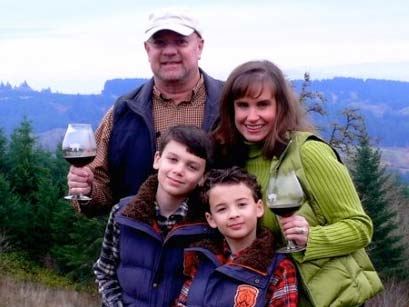 Pinot Noir, Pinot Gris and Pinot Blanc are offered. The wines are sold through the website at www.noblepigwine.com. A tasting room is shared with J. Wrigley Vineyards in a small cottage in Carlton. The Pollacks also have a terrific food blog with mouth watering recipes and photography at www.noblepig.com.
2009 The Noble Pig McMinnville Oregon Pinot Blanc 13.7% alc., 278 cases, $18, screw cap. Sourced from a very old vineyard in Yamhill County. · Pale yellow color in the glass. Fresh aromas of apple, poached pear, baking spice and warm honey. The flavors echo the aromas with an added note of grassy herbs and petrol. The fruit is crisped by the bright acidity and the mouth feel is slightly creamy. Pinot Blanc is my favorite casual and comfortable Oregon white wine. Very good.
 2009 The Noble Pig McMinnville Oregon Pinot Noir 13.2% alc., 100 cases, $34. Clones are Pommard and Dijon 114 and 115. Aged 12 months in French oak barrels. · Moderately light reddish-purple color in the glass. Aromas of fresh cherries, leaf, stem, cut flowers and apple core. Essence of black cherries and dried cranberries with subtle herbs and oak in the background. Aims to please with moderate silky tannins and a welcoming elegance. The wine acquires more body and interest over time in the glass, but is a bit austere and reserved lacking some mid palate verve and finishing strength. A little better the following day from a previously opened and re-corked bottle. Tasted twice. Good.
Jay Somers began as a master brewer at McMenamins pub in Portland, Oregon, apprenticed with John Paul at Cameron Winery, and then launched his own label, J. Christopher Wines in 1996. Somers specializes in Pinot Noir, Sauvignon Blanc and Chardonnay. He has formed a partnership with Dr. Ernst Loosen of Dr. Loosen and J.L. Wolf in Germany called Appassionata. Ernst began producing Pinot Noir at his J.L. Wolf Estate in 1996. The collaboration is aimed at producing Pinot Noir that combines the best ideas of the Old and New Worlds. Appassionata is a limited production Pinot Noir from the Willamette Valley, first produced in the 2006 vintage. Eventually, Appassionata will be produced entirely from estate grown fruit (planting began in the spring of 2010). The partners constructed a new J. Christopher Winery on Chehalem Mountain in Newberg, Oregon. Somers’ wines are distinctive and never lack from interest. Using old world winemaking techniques, he never sets out to please the masses. As his website proclaims, “If you make a wine that everyone loves, you’ve done something wrong.” For 2009, there are seven Pinot Noirs offered, both appellation blends and vineyard-designates. The wines are sold on the winery’s website at www.jchristopherwines.com and through fine wine retail channels. The J. Cru Club offers members first crack at newly released wines, notice about events at the winery and other news about J. Christopher wines and gigs.
2009 J. Christopher Willamette Valley Pinot Noir 13.5% alc., 1,500 cases, $28. The flagship wine. A blend from vineyards in the Dundee Hills, Chehalem Mountains and Eola Hills. Made with native fermentations and up to 18 months of French oak aging. Unfiltered. · Moderate reddish-purple color in the glass. Aromas of black cherry mash, mushrooms, brier patch and grassy field. A savory wine of interest with earthbound flavors of darker red stone and berry fruits with a hint of herbs and grass. Nicely composed with silky tannins and some persistence on the aromatic finish. Even better two days later from a previously opened and re-corked bottle. Very good.
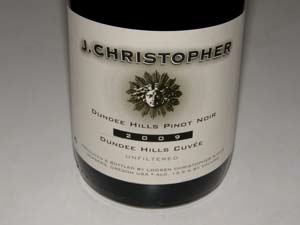 2009 J. Christopher Dundee Hills Cuvée Pinot Noir 13.5% alc., 450 cases, $35. A barrel selection from several vineyards including Bella Vida, Baptista, Maresh, Charlie’s, Abbey Ridge and Le Pavillon. Unfiltered. · Moderate reddish-purple color in the glass. Very shy initially, but opens beautifully over time in the glass revealing aromas of dark red and purple fruits with wood spice and subtle oak vanillin. Earthy and charming, with a medium weight core of darker Bing cherry and raspberry flavors perfectly accented by oak notes of spice and anise, and displaying a fancy thrust of pure fruit on the finish. Light on its feet and very accommodating. A step up over the Willamette Valley bottling.
2009 Expression 44 Roserock Vineyard Eola-Amity Hills Oregon Pinot Noir 14.1% alc., $38. Sustainably farmed vineyard planted in Nekia soils. Winemaker is Patrick Mahaney. · Moderate reddish-purple color in the glass. Very earthy nose replete with aromas of mushrooms, forest floor and oak. Ripe cherry and berry fruit veering to the red side with a hint of anise and oak. Well-behaved tannins with some persistence on the bright finish which shows a good cut of acidity. Pushes the ripeness envelope. The flavors trump the aromas at this stage. Good.
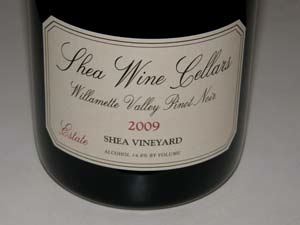 2009 Shea Wine Cellars Shea Vineyard Estate Yamhill-Carlton District Oregon Pinot Noir 14.8% alc., 3,555 cases, $40. An expression of the entire Shea Vineyard including Pommard, Wädenswil and four Dijon clones: 777, 114, 115 and 828. Aged in 47% new French oak barrels. 10% wood tank fermented. · Medium reddish-purple color in the glass. Very lovely nose offering vibrant aromas of dark cherry coulis, spice, rose petal, violets, sassafras and malt. Very tasty essence of black cherries and black raspberries with a complimentary touch of spice and anise. Charming with moderate fine-grain tannins and a fruit-laden finish. Can be enjoyed now. Very good.
2010 Ken Wright Cellars Abbott Claim Vineyard Willamette Valley Oregon Pinot Noir 13.0% alc., $48. This vineyard is owned by Ken and Karen Wright and is located in the Yamhill-Carlton District AVA. Label artwork by David Berkuam is a homage to field workers depicting harvest. · Moderately light reddish-purple color in the glass. The aromatics are a bit unusual opening with a little reduction funk which resolves revealing scents of spiced red berries, rose petals, cotton candy, sweet oak and other unidentifiable aromas. Sweet blue and black fruit on entry, austere and unripe in the middle, finishing with a kick of citrus peel acidity and tartness. Minimalistic and acidic. Could be an off bottle. Decent.
2008 Ponzi Vineyards Reserve Willamette Valley Oregon Pinot Noir 14.0% alc., $60 (sold out at the winery). A blend of several old vineyards primarily grown on Laurelwood soils in the Chehalem Mountains AVA. · Moderately dark reddish-purple color in the glass. Aromas of dark berry jam and plum pudding with a hint of stem and underbrush. Spicy and sweet array of red and black berry flavors robed in firm, muscular tannins, finishing with lively acidity and a floral note. Solid but not exceptional now. Good.
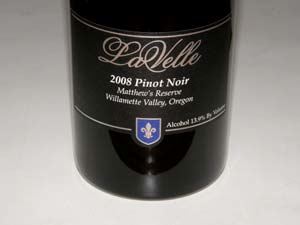 2008 LaVelle Matthew’s Reserve Willamette Valley Oregon Pinot Noir 13.9% alc., 430 cases, $35.99. The first reserve from this winery since 1998. Very impressive when tasted in September 2010. · Moderate reddish-purple color in the glass. Slowly evolves in the glass eventually offering intense aromatic charm with scents of black raspberries and dark stone fruits. Moderately intense core of black cherry and black raspberry flavors with accents of tea, cola and anise. The fruit really sings a high note from the eye-popping entry to a finish that seems to last an eternity. The tannins have melded and the texture is all silk and satin. Divine.
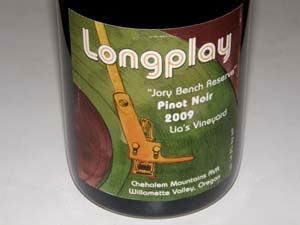 2009 Longplay Jory Bench Reserve Lia’s Vineyard Chehalem Mountains Oregon Pinot Noir 14.3% alc., $25. Todd Hanson grower and Aron Hess winemaker. · Light reddish-purple color and slightly cloudy in the glass. Faint aromas of red fruits with noticeable oak toast. Fruity, smoky and savory in a lighter style featuring flavors of earth-kissed red cherries and berries. A very gentle wine that is of interest for its pinotosity and drink ability but doesn’t deliver enough flavor. Good (+).
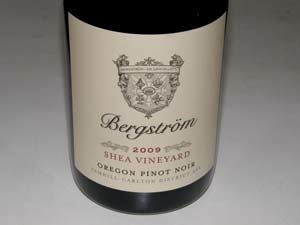 2009 Bergström Shea Vineyard Yamhill-Carlton District Oregon Pinot Noir 14.1% alc., $46. · Moderately intense reddish-purple color in the glass. Complex perfume exhibiting scents of purple fruits, spice, cigar box and toast. A medium weighted, tasty wine that offers layers of flavors including fresh plums, blackberries and Hoison sauce. The wine flows smoothly over the palate and lingers on the finish for what seems like 60 seconds. Hearty tannins are now evident, but they are well balanced by the fruit and acidity. Shea Vineyard performed beautifully in this vintage and Bergström has spotlighted this iconic fruit source beautifully. This wine will have many fans.
2008 Brooks Janus Willamette Valley Oregon Pinot Noir 13.4% alc., $30. · Moderately light reddish-purple color in the glass. Lacking fruit-driven aromas, the nose offers scents of brier, leaf, mushroom and toasted oak. Medium-weighted earthbound flavors of black cherries and raspberries with a significant wood smoke component. Silky soft on the palate but somewhat bland in the middle and shallow on the citrus-driven finish. Decent.
2009 Alexana Revana Vineyard Dundee Hills Willamette Valley Pinot Noir 14.6% alc., $40. · Darkly colored in the glass. Aromas of black raspberries, cassis, spice and oak. The flavors echo the aromas in a richly endowed fruit-driven wine with a mild oak presence in the background. Big and darkly fruited and a touch on the ripe side with a hint of raisin. Lacks the Dundee Hills signature. Good.
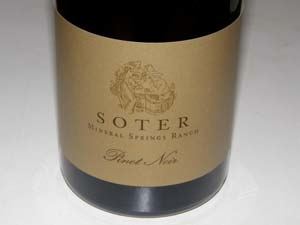 2009 Soter Mineral Springs Ranch Willamette Valley Oregon Pinot Noir 14.1% alc., $45. · Moderately light reddish-purple color in the glass. A chameleon in the glass, constantly changing. Various aromas are evident, including ripe plum, blackberry jam, spice, rose petals, and kid glove. Discreetly extracted flavors of black raspberries, black cherries and a hint of strawberries all wrapped in firm, ripe tannins. Silky with pleasing finesse, offering a big lip-smacking finish. Still great two days later from a previously opened and re-corked bottle.
2008 Belle Pente Murto Vineyard Dundee Hills Oregon Pinot Noir 13.4% alc., $30. Robin and Mike Murto’s vineyard was established in 1978. Indigenous yeast fermentations, aged 18 months in French oak barrels. No fining or filtration. · Moderately deep garnet color in the glass. Aromas of fresh picked red berries with a subtle green stem note. Slightly sweet dark red fruits are lighter weighted and somewhat buried in muscular tannins. Much better two days later from a previously opened and re-corked bottle displaying more vivid fruit and much less aggressive tannin. A good cellar candidate. Very good.
2008 Carabella Mistake Block Chehalem Mountains Oregon Pinot Noir 14.5% alc., 90 cases, $55. Pommard clone. · Moderate reddish-purple robe in the glass. Aromas of crushed strawberries, raspberries, sandalwood and vanilla pastry. The slightly confected flavors echo the nose with added notes of black cherries, cranberries and the faintest oak graham. Very soft in the mouth with pillowy tannins. Very good.
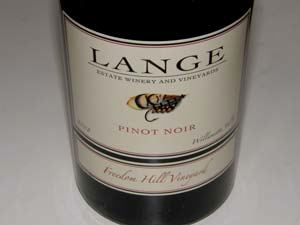 2008 Lange Estate Freedom Hill Vineyard Willamette Valley Oregon Pinot Noir 13.5% alc., 250 cases, $60. · Moderately dark reddish-purple color in the glass. Welcoming aromas of black plums, dark cherries, cassis, forest floor and damp earth. Soil-inflected core of intensely flavored black plum fruit that is beginning to shed its baby fat. Since last tasted in 2010, the tannins have become softer, the oak has faded into the background, and the wine is exhibiting an amazingly long finish with a pleasingly bright cut of acidity. The wine has the balance for long-term aging. Put on your big boy pants when you open this one.
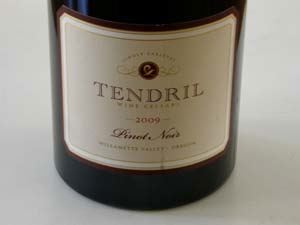 2009 Tendril Willamette Valley Oregon Pinot Noir 14.3% alc., $45. Winemaker Tony Rynder’s first label after making wine for others for 20 years. · Moderate reddish-purple color in the glass. Very shy aromatics with demure aromas of berries, fennel, cut flowers and roasted nuts. Medium weight tasty core of black cherries and black raspberries with a complimentary spice and vanilla accent. Very charming in the mouth, striking an impression on the mid palate and sporting a pleasing velvety texture. The flavors trump the nose at this stage. Very good.
2009 Angela Clawson Creek Vineyard Oregon Pinot Noir 13.5% alc., $45. A tall, very heavy bottle. Clones 777, Wädenswil and 115. The winemaker is Ken Wright. · Moderate reddish-purple color in the glass. Savory nose offering aromas of mushrooms, wet leaf, oak and pharmaceutical notes with dark red cherries and berries in the background. Redder fruits are featured with a touch of blueberries, pomegranate and spice. Fairly silky on the palate, but exhibiting firm prodigious tannins, finishing juicy with a bright nerve of acidity. The fruit is buried in the tannins at present. Good.
Loma Prieta Stakes a Claim for California PinotagePaul Kemp is a successful personal injury lawyer who many years ago purchased a magnificent property high in the Santa Cruz Mountains with sweeping views of the entire Monterey Bay to the west and the majestic Mount Loma Prieta to the east. With spouse Amy, Paul has built a beautiful home on the property and an adjacent Tuscan-styled 4,000 square foot winery and tasting room which was completed in 2009. Paul began producing his own wine in 2003 in his garage with the help of a winemaker consultant. He was startled when two early wines were awarded gold medals including his 2004 Loma Prieta Pinot Noir made from purchased grapes. Several of his subsequent Pinot Noirs (and other varietals) have won gold medals in wine competitions. He planted a 3-acre vineyard with the assistance of noted viticulturist Prudy Foxx which is laid out in front of his home. The vineyard is primarily planted to Dijon clones of Pinot Noir and allows him to offer a small amount of estate grown Pinot Noir as well as Santa Cruz Mountain Pinot Noir obtained from nearby sources. The Loma Prieta label is striking with artwork depicting a whimsical magician holding a glass of wine and flying over Mount Loma Prieta with an earthquake fault clearly visible. The artwork was specially commissioned by the Kemps and displays the work of Martin LaBorde from New Orleans, Louisiana. In 2008, Paul obtained 1 ton of Pinotage grapes from Vino Con Brio Estate in Lodi and made his first Pinotage. The wine sold out in a couple of days and won 3 gold medals and a double gold medal in wine competitions. Beginning in 2009, he attempted to purchase every Pinotage grape available in California and he is now the largest producer of Pinotage in North America. The 2009 vintage won several gold medals in competitions as well. The grapes currently come from two vineyards in Lodi and one in the Sierra Nevada area near Jackson, California. There are only about 25 acres of Pinotage planted in California according to Paul, including a small planting on his estate. In 2011, he produced one barrel of Estate Pinotage and has planted an additional 500 vines. According to Peter F May, the author of Pinotage: Behind the Legends of South Africa’s Own Wine, there are at least 20 wineries making California Pinotage, the first being (he believes) Steltzner in the Napa Valley in the 1970s. Pinotage is also commercially grown and made in Oregon, Virginia and the Okanagen Valley of British Columbia, Canada. I am familiar with Pinotage from Vino Con Brio Estate, Fort Ross (Sonoma Coast), and I believe J Winery produced a Pinotage at one time. My tasting experiences have been very limited and not memorable other than the few I have had from Fort Ross which is owned by South African ex-patriots. I must confess that I know little about Pinotage. A comprehensive, and for me, a very timely article appeared in a recent issue of the Wine Enthusiast (“The Power of Pinotage,” by Lauren Buzzeo, December 15, 2011). Pinotage is South Africa’s wine of national identity, somewhat analogous to Zinfandel in this country. According to Buzzeo, “Pinotage is a grape variety that was created in 1925 by Abrahan Izak Perold, a chemist tasked by the Cape government to venture overseas and find grape varieties that could be cultivated in the region. He decided to crossbreed two of them to hopefully evoke the best qualities of both; the robust nature and growing ease of Cinsault (known locally as Hermitage) and the delicious refinement of Pinot Noir. The first commercial planting of the grape was in 1943 and the earliest wines were deep in color with a strong vinous character.” The problem with early Pinotage wines was that they tasted flawed, often of burnt matchsticks or chemicals, and many bad examples were sold in the local and international marketplace for years giving the grape a bad reputation. There was a learning curve and today vintners are more attuned to how and where to grow it properly and how to make it. It is now the fastest growing red variety in bottle for South African wine exports. That said, there are some South African winemakers who don’t like Pinotage. Buzzeo quotes South African consulting winemaker Brett Rightford. “Pinotage is the new heartbreak grape. We have a legacy of winemaking with other varieties that stretches hundreds of years. Pinotage is a relatively new focus (80-plus years old) that takes time to understand, and those who make the effort are well rewarded.” Pinotage is typically a full-bodied, intense, darkly colored and fruited (black currant, black plum) wine with a muscular tannic structure suitable for cellaring. The wines may age for at least 20 years at which time they often show Pinot Noir characters, much like aged Zinfandel. Coffee or mocha accents are commonplace but there are a wide range of styles. Paul sent me the 2008 and 2009 vintages of Loma Prieta Amorosa Lodi Pinotage to sample and I compared them to a highly rated South African version from producer Kanonkop. The wines are produced and bottled for Loma Preita Winery by Lodi Vino Co.. Take my reviews with a grain of salt and explore on your own, because I have no credible reference point for Pinotage wines. The wines are sold through the winery’s online store at www.lomaprietawinery.com. The Loma Prieta tasting room is usually open weekends (check at 408-353-2950 in advance) and download the detailed directions to the winery from the website (not recommended in bad weather and remember that cell phones don’t work on this route!). The adventurous travel experience is definitely worth the effort.
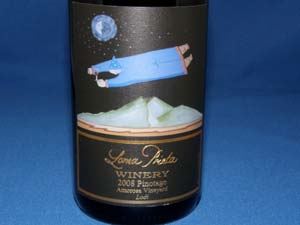 2008 Loma Prieta Winery Amorosa Vineyard Lodi Pinotage 14.3% alc., $45. · Dark purple color in the glass. Aromas of black fruits, tobacco, earth, beet root, jam on toast and oil can (from oak). Tasty core of black raspberry and blackberry fruit with a little red fruit and tea flavors chiming in. The fruit is really vivid and charming and reminds of Pinot Noir. Silky with mild fine-grain tannins. Very good.
2009 Loma Prieta Winery Amorosa Vineyard Lodi Pinotage 15.1% alc., $45. · Dark purple color in the glass. Aromas of dark red berries and eucalyptus. Earthy and rustic with a full monty of dark red and black fruit flavors highlighted with a note of dark chocolate, all swathed in firm tannins. Better the following day from a previously opened and re-corked bottle showing less tannin, more fruit and more persistence on the finish. Needs a couple of years in bottle. Good (+).
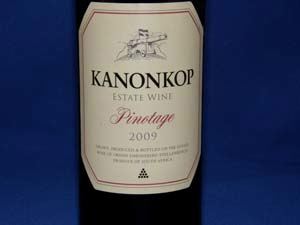 2009 Kanonkop Estate South Africa Pinotage 14.0% alc., $36.95. Imported by Cape Classics, New York, New York. Crafted from Kanonkop’s oldest vines up to 57 years old. Non-irrigated, bush vines in decomposed granite soil. 3-day cold soak in open-top fermenters, punch downs every 2 hours, aged 16 months in 70% new and 30% second fill French oak. · Deep purple color in the glass. Aromas of ripe dark red berries, damp wine cellar, loamy earth and dirty boot - like enjoying fresh berries with a person who hasn’t showered in a couple of days - fruity, earthy and a little stinky. Full-bodied, dense and rustic with black currant and black plum flavors. The fruit is tightly compressed in the wine’s prodigious tannins. Oak is evident but not overbearing. I would imagine that this wine would benefit from several years in the cellar. Good.
For more information on Pinotage: www.pinotage.org (The Pinotage Club), and www.pinotage.co.za (Pinotage Association of South Africa)
Major Pinot Noir Events in 2012
January 14-15: 20th Russian River Valley Annual Winter Wineland www.wineroad.com January 26-28: Central Otago Pinot Noir Celebration www.pinotcelebration.co.nz January 28: Pinot Days Santa Monica www.pinotdays.com February 7: Wine Artisans of the Santa Lucia Highlands New Release Reception Ft. Mason San Francisco www.santaluciahighlands.com February 11: Pasadena Pinotfest Grand Tasting www.pasadenapinotfest.com February 11: Affairs of the Vine Pinot Noir Summit San Francisco www.affairsofthevine.com February 22-25: La Paulee de San Francisco 2012 www.lapaulee.com March 2-3: World of Pinot Noir www.wopn.com March 2 and March 11: 34th Annual Russian River Valley Barrel Tasting www.wineroad.com March 9-11: McMinnville Wine & Food Classic www.sipclassic.org March 12: Family Winemakers of California Tasting Del Mar www.familywinemakers.org March 23-24: Seventh Annual Celebration of Pigs & Pinot www.hotelhealdsburg.com March 31-April 1: Pinot Paradise Santa Cruz Mountains www.scmwa.com April 1-30: Dundee Hills Passport Tour www.dundeehills.org April 20-23: Santa Barbara County Vintners' Festival Weekend www.sbccountywines.com May 18-20: Anderson Valley Pinot Noir Festival www.avwines.com May 26-28: Memorial Weekend Oregon Wineries Open Houses June: Pinot Days San Francisco www.pinotdays.com June: Marin County Pinot Noir Celebration www.malt.org July 27-29: 26th Annual International Pinot Noir Celebration www.ipnc.org August 3-5: West of West Wine Festival www.westofwestwine.com August 18-19: Wine and Fire! Weekend Sta. Rita Hills www.staritahills.com August 18-19: Carlton’s Walk in the Park www.caltonswalkinthepark.com October 21: Russian River Valley Pinot on the River www.pinotfestival.com November 3-4: 14th Annual Russian River Valley Wine & Food Affair www.wineroad.com November 9-10: ¡Salud! The Oregon Wine Auction www.saludauction.org November: Pinot Days Chicago www.pinotdays.com November: Farallon PinotFest San Francisco www.farallonrestaurant.com November 23-25: Thanksgiving Weekend Oregon Wineries Open Houses
Pinot BriefsPigs & Pinot Weekend Charlie Palmer’s 7th Annual Pigs & Pinot Weekend will be held at the Hotel Healdsburg in Healdsburg, California, March 23 and 24, 2012. The event is so popular that weekend full access tickets are only available through a lottery. Understandable since this year’s participating pork authorities include Guy Fieri, Michael Mina, Casey Thompson and Michael White. Lottery submissions are being accepted now through Thursday, January 12, 2012, at www.eventbrite.com/event/2680811379.
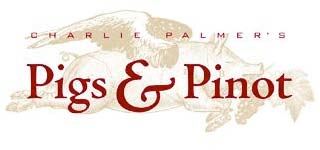 Pasadena PinotFest The 4th Annual Pasadena PinotFest will be held January 14 through February 11, 2012. Sponsored by Noir Food & Wine for the benefit of Hathaway-Sycamores Child & Family Services. The Kickoff Dinner will feature 5 courses, 5 wineries and 5 chefs with Pinot Noir from Clos Pepe Winery, Hitching Post Winery, Alma Rosa, D’Alfonso-Curran Winery, and Williams Selyem Winery. The Grand Tasting will feature 100 wineries pouring Pinot Noir at the Altadena Country Club. For information and tickets visit www.pasadenapinotfest.com. Pinot Days Southern California The 3rd Annual Pinot Days Southern California Grand Festival Public Tasting will be held at Barker Hangar in Santa Monica on Saturday 28, 2012. Over 125 producers of Pinot Noir will be pouring. A number of ancillary wine tastings at local venues will also be held. Visit www.pinotdays.com for more information and tickets.
 Good News for Wineries US Wine Market Forecast to 2012 recently noted that the United States wine market is one of the fastest growing markets in the world, both in production and consumption. The market has been fueled by increased wine consumption, online wine purchasing and a growing millennial consumer population that is the future of the United States wine industry. Moreover, the rise in the number of female wine drinkers is fueling the growth of the United States wine industry as well. The United States wine market is expected to reach an approximate value of $33.5 billion with 871 million gallons of wine sales by 2013. The report says that the economic recession had little impact on the United States wine industry, but ask $50 a bottle Pinot Noir producers about this and they have suffered as consumers started buying less amounts of expensive wine, searched for bargains, and fueled the success of flash sale websites. Restaurants' wine sales value declined by 10% as consumers dined out less often. The full US Wine Market Forecast to 2012 is available ($700) at www.marketresearch.com/RNCOS-v3175/Wine-Forecast-2659218. On another front, the Wine Institute of California reported that wine exports from California are set to smash all records in 2011 with a 23% increase in shipments in the first 20 months of the year, boasted by a weak dollar and soaring sales in China (exports have increased by 35% in 2011 through October and now account for about 5% of all exports). California producers believe they can exceed $2 billion dollars worth of wine exports by 2020. Also of interest is a report by The Nielsen Company that table wines priced at $20 and up grew 11.1% in volume in the 52 weeks ending October 15, 2011, and domestic table wines outperformed imports in that period. The fastest growing import was New Zealand wines followed by Argentina. Rhys Vineyards Updated Vintage Chart At Rhys Vineyards all bottlings have recently been revisited and they have updated their vintage chart and drinking recommendations on their website. Generally, their 2004 to 2006 wines are in various stages of maturity, the 2007s and 2008s are largely closed though a couple of 2007s are just beginning to unwind, and the 2009s invite early drinking if you are tempted to try a bottle young. The update drinking recommendations are available at www.rhysvineyards.com/wines/ tasting.php. RedNek Wine Glass Carson Home Accents has had sales of $5 million in less than a year since they began offering the RedNek Wine Glass that features a Ball Mason jar glued to a Libbey candlestick holder. The glasses sell for about $11.58 at amazon.com. www.money.cnn.com/2011/12/20/smallbusiness/ rednek_wine_glass/?source=cnn_bin.
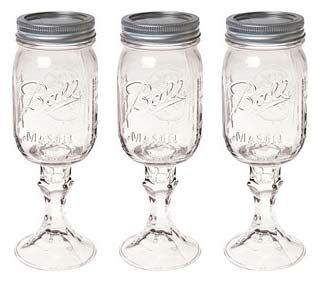 Book: Great, Grand and Famous Champagnes: Behind the Bubbles This book charts the historical development of Champagne’s high brow brands from its monastic origins and includes chapters on Dom Perignon’s creation of the cork stopper, women behind the bubbles such as Madame Bollinger and the Widow Clicquot, and the story of the great Champagne producers. The high Champagne culture is detailed with stories of monarchical history, political intrigue, tales of art deco age excess, and celebrity dirt. The book contains full color images of great works of art and period ad posters, shots of glamarati past and present, and fascinating historical photos. Written by wine writer Jayne Powell and published by Arbon Publishing, the book is distributed by the Wine Appreciation Guild and is available at bookstores and online. $59.95, hardcover, 240 pp. Veteran Winemaker, Forrest Klaffke, Passes Away I really liked Forrest. He was down-to-earth, had a passion for wine and in particular Pinot Noir, and always smiled during the time I spent with him. When I visited him at Willamette Valley Vineyards after IPNC a few years back, we did a marathon barrel tasting that was memorable and when I left, he plied me with bottles and one of my most treasured possessions, a black tee shirt that read, “It’s Willamette, Damn It!” At the time, Forrest told me he had been treated for throat cancer but it was in remission. Unfortunately, he succumbed to a recurrence during the 2011 harvest. Forrest had been at Willamette Valley Vineyards for 18 years, and led the winemaking team for ten years. He was incredibly dedicated to his craft and I am saddened by his passing. The Donum Estate Sold to Danes Racke, the German wine and spirits group, sold The Donum Estate to Winside, Inc., a partnership of Danish investors, for an undisclosed amount. The deal includes a 147- acre Sonoma Carneros property with 45 acres of vineyards and several buildings, the Donum and Stemmler brands, and inventories. The team that developed The Donum Estate over the past decade will stay in place including Anne Moller-Racke, president and winegrower, Kenneth Juhasz, consulting winemaker, Frieda Guercio, national sales director, and Lauro Servin, vineyard manager. The sale marks the end of 30 years of Racke involvement in Carneros. Anne Moller-Racke arrive in 1981 to help run the German firm’s new acquisition, Buena Vista. As Anne trained in viticulture with industry icons like Andre Tchelistcheff, she was actively involved in forming what is now the Carneros Wine Alliance and establishing Carneros as an AVA. She planted what was then the Tula Vista Ranch in 1989-90 and when Racke sold Buena Vista to Allied Domecq in 2001, it retained Tula Vista, renamed it The Donum Estate and put Anne in charge of making the ultimate Pinot Noir.
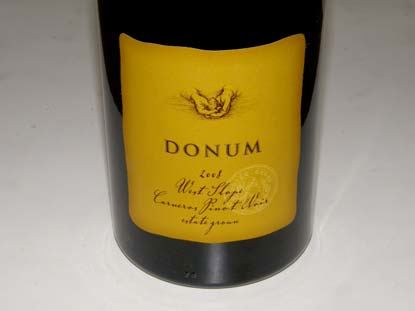 Wine on Tap Latest Fad Wine on tap has become very popular in restaurants in San Francisco, Los Angeles, Las Vega, Atlanta and New York. The reusable 5-gallon kegs can hold the equivalent of 25 bottles of wine, can store the wine for more than five months, and keep the by-the-glass wines fresher for a longer time. The wines are never exposed to oxygen, making the wines always fresh, and creating zero waste. Winery Ownership and other Changes in Anderson Valley Napa’s Cliff Lede acquired the Breggo label and the Savoy Vineyard, and Twomey bought the Monument Tree Vineyard. Kevin Harvey of Rhys Vineyards now farms the Bearwillow Vineyard located in the deep end of the Anderson Valley, having refurbished this vineyard and added plantings with up to 7,000 vines per acre in density. The new Wendling Vineyard has been planted by noted viticulturist Paul Ardzrooni for Copain and Littorai. Peter Knez acquired Cerise and Demuth vineyards and launched his new Knez label. Maggy Hawk released the inaugural Pinot Noirs from the 2007 vintage this past year. Pinot Noir acreage in Anderson Valley is now up to over 1,450 acres. Fort Ross/Seaview AVA Steve Heimoff reported in his blog and in the Wine Enthsiast on December 15, 2011, that the Fort Ross/Seaview AVA has been approved. The AVA consists of 27,500 acres that is mostly mountainous and above the Sonoma Coast fogline. The new AVA takes legal effect on January 13, 2012. Notable vineyards within the AVA include Fort Ross, Hirsch, Peay and Precious Mountain. Other sub-regions in the huge Sonoma Coast AVA such as the Petaluma Gap have been reluctant to pursue AVA designation, as the use of the current Sonoma Coast designation sends a powerful marketing message.
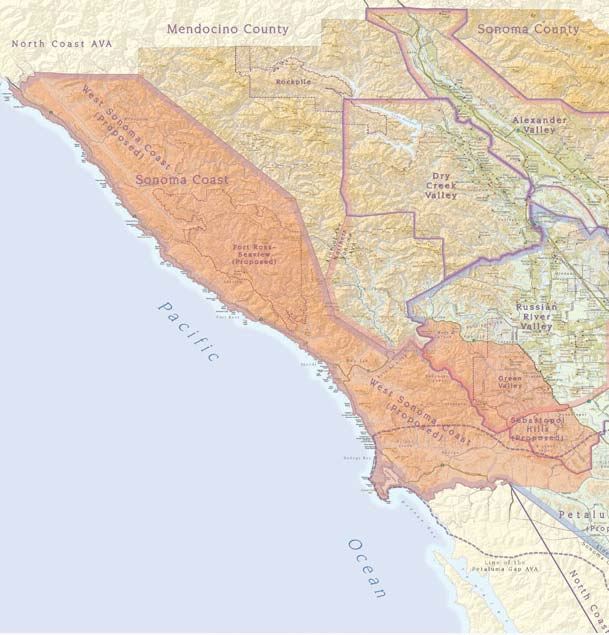 San Francisco Chronicle Top 100 Wines 2011 For the first time, the winning wines had alcohol levels listed for the wine. The winning Pinot Noirs had a mean of 13.66%. 24 Pinot Noirs made the list, down from 28 in 2010. A list of the top Pinot Noirs is at www.sfgate.com/cgi-bin/wine/top100-2011/page?id=pinotnoir. Practically every one of the awarded Pinot Noirs was reviewed in The PinotFile this past year and are definitely deserving. Wine Bloggers Not Trusted A report in 2011 from the United Kingdom’s Wine Intelligence Consultancy reported that independent bloggers are one of the least trusted sources of wine information in the United Kingdom, United States and France. The study found that only one in five regular wine drinkers in the United Kingdom trust what independent bloggers say about wine, compared with more than 50 percent who trust their wine merchant. In the United States, the numbers were 20 percent and 80 percent, while only 10 percent of the French trusted bloggers. The report received considerable criticism, especially from many high profile wine blogs The study also indicated that not many people are even aware of wine bloggers. The report ended with the comments that too many wine blogs are poorly written, do not contain the information consumers want and focus too much on the writers of the blogs. Scott Paul Opens Tasting Room and Event Center in Portland Noted Willamette Valley Pinot Noir producer and Burgundy importer Scott Wright has opened Scott Paul PDX in Portland to allow him to host tastings and wine seminars. Upcoming seminars include Burgundy 101, Champagne and Oregon- Burgundy comparison. Phone 503-319-5827 for reservations. Southern Oregon Wine Institute The Southern Oregon Wine Institute (SOWI) was established in 2008 at Umpqua Community College as the first viticulture and enology program in Oregon outside the Willamette Valley. SOWI offers degree, certificate and continuing education programs in a modern 24,000 square-foot, LEED-certified facility that includes a commercial-scale winemaking facility, a private testing facility to serve all regional winemakers, and an event center for conferences, meetings and receptions. The Danny Lang Teaching, Learning and Event Center was recently completed. The center will serve growers and winemakers throughout Douglas, Jackson, Josephine, Lane, Klamath, Coos and Curry counties. For information, visit www.umpqua.edu/viticulture-and-enology. Kendall-Jackson to be Featured on “Undercover Boss” Rick Tigner, President of Kendall- Jackson Winery, will be one of the upcoming bosses to go undercover during the upcoming third season of the reality series, “Undercover Boss.” The episode will air Sunday, January 29, 2012, on CBS. Kendall-Jackson is the first winery to be featured on the show. Chairman and proprietor Barbara Banke, along with her and Jackson’s children Katie, Julia and Christopher, were present for the filming. Music Alters your Drinking Dr. Lorenzo Stafford, a psychologist from the University of Portsmouth conducted an experimental study to find out how music can change the taste of alcohol. Previous research has shown that people drink more alcohol and at a faster rate if loud music is playing in the background. Stafford’s study revealed that sweetness perception of alcohol was significantly higher when music was played in the background compared to other distractions causing a significant effect on taste judgment. The research was published in theJournal of Food Quality and Preference. Vinopedia I found a new online search engine and price comparison vehicle for wine at www.vinopedia.com. The site searches 2,733,185 wine offers. The price lists of wine stores worldwide are compared and background information of each wine such as ratings are included. A locator of wine stores near you is offered as well. I like using it. Dump the Flute for Champagne Every since the vigneron from Dom Perignon visited the Grape Radio studios a couple years back and preferred to drink his Rosé Champagne out of a Burgundy glass, I have retired my Champagne flutes to the back of my glass cabinet, pulling them out only for those who insist on drinking out of them. The latest word according to Georg Riedel (www.thedrinksbusiness.com) is that Champagne houses are openly relinquishing the traditional flutes in favor of white wine glasses. The larger surface area delivers better aromas, complexity and a creamier texture. Flutes are often filled to the top which prevents the wine from breathing. Riedel has developed a new sparkling wine glass similar to a white wine glass that is rounder and larger than a traditional flute. There are many who would argue that the flute is part of the mystique of Champagne and differentiates it from still wine and are reluctant to dump the flute. And, Finally, a Laugh Have you ever noticed the difference between how women and men purchase wine? The woman will say. “I found this $100 wine on sale for $50 and then I had a coupon for 50% off and when I got to the register, there was a manager’s special for an added 60% off, but come to find out it was a discontinued item with a manufacturer’s rebate, so the sales girl gave it to me for $5.” Men say, “See this bottle of wine? Manufacturer’s suggested retail price was $100. I got it for $250. Beat that.”
New Year’s First Winegasm
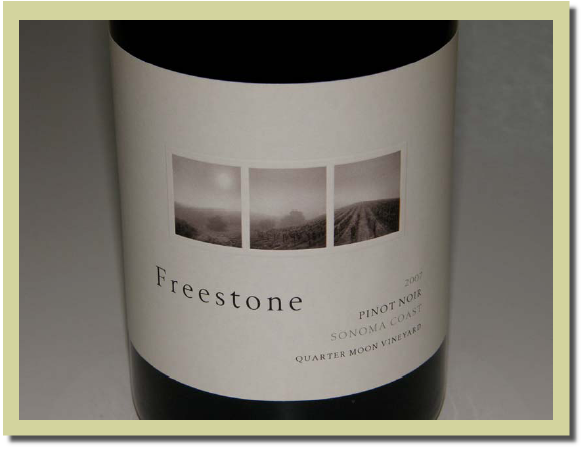 Generally I really hate to read someone's description of a great wine that they had with a meal, because without experiencing the wine yourself, the verbiage leaves a longing jealousy. It’s like, “I had it, you didn’t, nanna nanna na na.” Please bear with me, for I just have to tell you about today’s winegasm. I lunched today at my favorite restaurant, Marche Moderne, in Costa Mesa, California with a long time friend. I stopped at my wine locker on the way to the restaurant and grabbed a bottle, knowing that my friend was a serious Pinot lover and would appreciate a special wine. The wine I chose was the 2007 Freestone Quarter Moon Vineyard Sonoma Coast Pinot Noir (13.5% alc., 60 cases, $100). I first tasted this at the Freestone Winery in barrel in 2008 and again in bottle in 2009 and bought a few bottles. I loved it in barrel and really loved it in bottle early on. Quarter Moon Vineyard is one of Freestone’s Estate vineyards located on the western side of Bohemian Highway in the chilly, true Sonoma Coast about five miles from the Pacific Ocean. The vineyard lies above the fog line at 400 feet elevation and is in proximity to vineyards owned by Benziger and Kistler. Clones include heritage selections such as Calera and Dijon 115, 777 and 828. Sorting of the grapes for this wine was fanatically meticulous. 100% whole cluster fermented in a wood tank fermenter, the wine was aged in about 50% light to medium toasted new French oak, and bottled unfined and unfiltered. The winemakers were Theresa Heredia and Damien Parker. Today, after the wine was opened, my friend and I just looked at each other and smiled and as we finished the bottle over the course of an hour and a half, we kept remarking how stellar it was, certainly the equal of any great Burgundy we have had in recent years. This was the Holy Grail of Pinot Noir that so many devoted California vintners have searched for. It was perfect in every way. The aromatics were stunning with a bright perfume of cherries, rose petals and exotic Asian spice, the mouth feel was all velvet, the tannins were delicate, the red berry and cherry fruit was perfectly ripe and spiced, and the finish was fresh and clean showing a peacock tail of flavor of uncommon generosity. Seamless in every way and one of the greatest transcendent California Pinot Noirs I have ever tasted. |